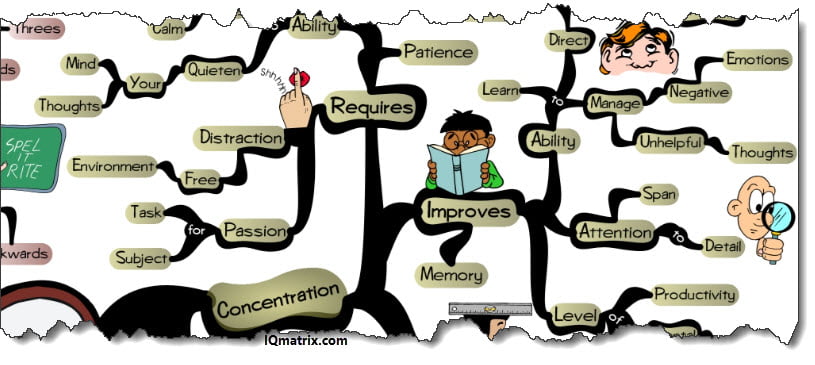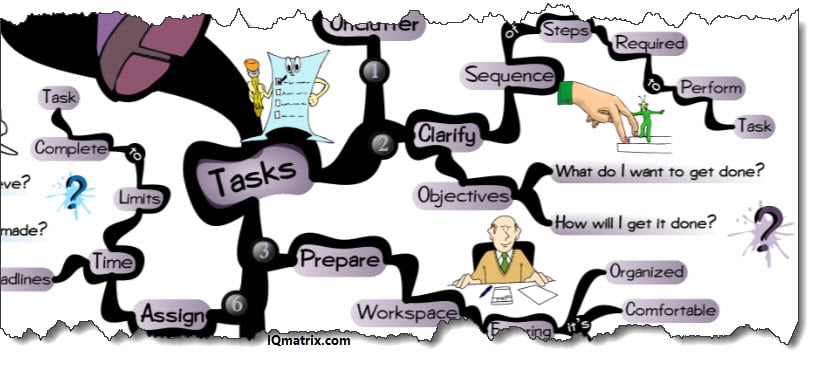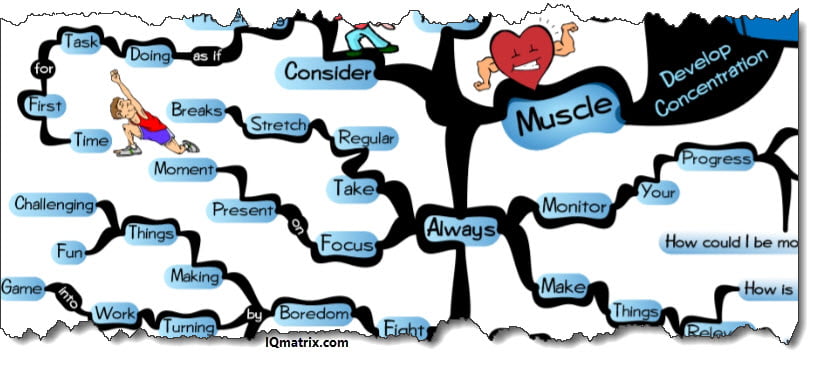Improve Rapport with difficult patients
As psychiatrists, we all come across patients who press our buttons and engender negative feelings, such as anger, frustration, and inadequacy.1 These patients have been referred to as “hateful” or “difficult” because they disrupt the treatment alliance.1,2 We are quick to point our fingers at such patients for making our jobs harder, being noncompliant, resisting the therapeutic alliance, and in general, being “problem patients.”3 However, the physician–patient relationship is a 2-way street. Although our patients knowingly or unknowingly play a role in this dynamic, we could be overlooking our role in adversely affecting this relationship. The following factors influence the physician–patient bond.1,2
Countertransference.

We may have negative feelings toward a patient based on our personalities and/or if the patient reminds us of someone we may not like, which could lead us to over-prescribe or underprescribe medications, conduct unnecessary medical workups, distance ourselves from the patient, etc. Accepting our disdain for certain patients and understanding why we have these emotions will allow us to better understand them, ensure that we are not impeding the delivery of appropriate clinical care, and improve rapport.
Listening.

It may seem obvious that not listening to our patients negatively impacts rapport. However, in today’s technological world, we may not be really listening to our patients even when we think we are. Answering a text message or reading the patient’s electronic medical record while they are talking to us may increase productivity, but doing so also can interfere with our ability to form a therapeutic alliance. Although we may hear what our patients are saying, such distractions can create a hurdle in listening to what they are telling us.
Empathy

often is confused for sympathy. Sympathy entails expressing concern and compassion for one’s distress, whereas empathy includes recognizing and sharing the patient’s emotions. Identifying with and understanding our patients’ situations, drives, and feelings allow us to understand what they are experiencing, see why they are reacting in a negative manner, and protect them from unnecessary emotional distress. Empathy can lead us to know what needs to be said and what should be said. It also can demystify a patient’s suffering. Not providing empathy or substituting sympathy can disrupt the therapeutic alliance.
Projective identification.
Patients can project intolerable and negative feelings onto us and coerce us into identifying with what has been projected, allowing them to indirectly take control of our emotions. Our subsequent reactions can unsettle the physician–patient relationship. We need to be attuned to this process and recognize what the patient is provoking within us. Once we understand the process, we can realize that this is how they deal with others under similarly stressful conditions, and then react in a more supportive and healthy manner, rather than
Patients can project intolerable and negative feelings onto us and coerce us into identifying with what has been projected, allowing them to indirectly take control of our emotions. Our subsequent reactions can unsettle the physician–patient relationship. We need to be attuned to this process and recognize what the patient is provoking within us. Once we understand the process, we can realize that this is how they deal with others under similarly stressful conditions, and then react in a more supportive and healthy manner, rather than be reviling our patients and negatively be impacting the therapeutic relationship.
How to Snack?
How can you keep snacking from derailing your healthy eating program, not to mention weight control? Try these tips.
Keep junk food out of the house.
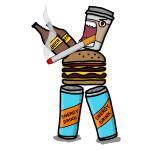
There’s a lot of truth to the old joke about the “see-food diet” — you see food and you eat it. The opposite is also true. If you don’t have junk food lying around, the sight of it won’t tempt you, so don’t even bring it home. After all, you can’t eat what isn’t there. Or, if someone in your household tends to have chips or other unhealthful snacks, put them out of sight.
Don’t skip meals.
Skipping meals may seem like a good way to cut calories, but in fact this just makes you so hungry later in the day that you’re vulnerable to devouring mega-portions of snack food in order to supply your body with easily digested sugars.
Snack mindfully.

Have you ever watched a show on television with a bag of chips or pint of ice cream in hand, only to find that it was all gone before you knew it? This type of mindless eating can pack on a lot of unwanted calories. The solution is simple. Try not to snack while doing something else like surfing the Web, watching TV, or working at your desk. Instead, stop what you’re doing for a few minutes and pay attention to your snack. Savoring a piece of fine chocolate can be more satisfying than gobbling down a whole chocolate bar.
Remember, you can take it with you.

Think ahead and carry a small bag of healthful snacks in your purse or the glove compartment of your car. If you have a healthy snack handy — preferably, one you really like — you won’t turn in desperation to the calorie-laden cookies at the coffee counter or the candy.
Zero in on hunger.

Before you snack, ask yourself, “Am I truly hungry?” Many of us mistake emotions, such as stress and fatigue, for hunger. If the answer is yes (your stomach feels hollow, your head is achy), make sure you’re not confusing hunger with thirst. Drink an 8-ounce glass of water, then wait 10 to 15 minutes. If you’re still hungry, have a healthful snack.
Know your cravings.

If you want a snack, but you’re not hungry, attack cravings from a psychological level. Ask yourself how you’re feeling. Lonely? Bored? Stressed? Then, ask yourself the bigger question: Will food fix this problem? The answer is always no. Eating a cookie, for example, won’t address a problem at work that you’re worried about. Go for a walk around the block, do a few stretches, put on some music, or choose another simple activity that might distract you or boost your mood. Then if you still want the food, fine. Ask yourself what food you really want. Then eat only a small amount, and make it good. If you’re craving chocolate, for example, eat one small square and savor it. It’s important that you snack on what you’re craving rather than deny the craving. Eating around a craving may only cause you to eat more because the craving isn’t satisfied.
10 Thinking Errors That Will Crush Your Mental Strength
Mental strength requires a three-pronged approach—managing our thoughts, regulating our emotions, and behaving productively despite our circumstances.
While all three areas can be a struggle, it’s often our thoughts that make it most difficult to be mentally strong.
As we go about our daily routines, our internal monologue narrates our experience. Our self-talk guides our behavior and influences the way we interact with others. It also plays a major role in how you feel about yourself, other people, and the world in general.
Quite often, however, our conscious thoughts aren’t realistic; they’re irrational and inaccurate. Believing our irrational thoughts can lead to problems including communication issues, relationship problems, and unhealthy decisions.
1. All-or-Nothing Thinking

Sometimes we see things as being black or white: Perhaps you have two categories of coworkers in your mind—the good ones and the bad ones. Or maybe you look at each project as either a success or a failure. Recognize the shades of gray, rather than putting things in terms of all good or all bad.
2. Overgeneralizing

It’s easy to take one particular event and generalize it to the rest of our life. If you failed to close one deal, you may decide, “I’m bad at closing deals.” Or if you are treated poorly by one family member, you might think, “Everyone in my family is rude.” Take notice of times when an incident may apply to only one specific situation, instead of all other areas of life.
3. Filtering Out the Positive

If nine good things happen, and one bad thing, sometimes we filter out the good and hone in on the bad. Maybe we declare we had a bad day, despite the positive events that occurred. Or maybe we look back at our performance and declare it was terrible because we made a single mistake. Filtering out the positive can prevent you from establishing a realistic outlook on a situation. Develop a balanced outlook by noticing both the positive and the negative.
4.Mind Reading

We can never be sure what someone else is thinking. Yet, everyone occasionally assumes they know what’s going on in someone else’s mind. Thinking things like, “He must have thought I was stupid at the meeting,” makes inferences that aren’t necessarily based on reality. Remind yourself that you may not be making accurate guesses about other people’s perceptions.
5. Catastrophizing

Sometimes we think things are much worse than they actually are. If you fall short on meeting your financial goals one month you may think, “I’m going to end up bankrupt,” or “I’ll never have enough money to retire,” even though there’s no evidence that the situation is nearly that dire. It can be easy to get swept up into catastrophizing a situation once your thoughts become negative. When you begin predicting doom and gloom, remind yourself that there are many other potential outcomes.
6. Emotional Reasoning

Our emotions aren’t always based on reality but we often assume those feelings are rational. If you’re worried about making a career change, you might assume, “If I’m this scared about it, I just shouldn’t change jobs.” Or, you may be tempted to assume, “If I feel like a loser, I must be a loser.” It’s essential to recognize that emotions, just like our thoughts, aren’t always based on the facts.
7. Labeling

Labeling involves putting a name to something. Instead of thinking, “He made a mistake,” you might label your neighbor as “an idiot.” Labeling people and experiences place them into categories that are often based on isolated incidents. Notice when you try to categorize things and work to avoid placing mental labels on everything.
8. Fortune-telling
Although none of us knows what will happen in the future, we sometimes like to try our hand at fortune-telling. We think things like, “I’m going to embarrass myself tomorrow,” or “If I go on a diet, I’ll probably just gain weight.” These types of thoughts can become self-fulfilling prophecies if you’re not careful. When you’re predicting doom and gloom, remind yourself of all the other possible outcomes.
9. Personalization

As much as we’d like to say we don’t think the world revolves around us, it’s easy to personalize everything. If a friend doesn’t call back, you may assume, “She must be mad at me,” or if a co-worker is grumpy, you might conclude, “He doesn’t like me.” When you catch yourself personalizing situations, take time to point out other possible factors that may be influencing the circumstances.
10. Unreal Ideal
Making unfair comparisons about ourselves and other people can ruin our motivation. Looking at someone who has achieved much success and thinking, “I should have been able to do that,” isn’t helpful, especially if that person had some lucky breaks or competitive advantages along the way. Rather than measuring your life against someone else’s, commit to focusing on your own path to success.
ref:
https://www.psychologytoday.com/blog/what-mentally-strong-people-dont-do/201501/10-thinking-errors-will-crush-your-mental-strength
Daily Face skin care
|
|
A widely advertised facial moisturizer claims to be the best on the market — and sells for $225 per bottle. Should you buy it? Another brand offers a complete skin care regimen — but it comes in 10 different bottles of lotions and potions that all need to be applied daily. Is it worth your time?
Despite manufacturers’ claims, many cosmetic products will remove more cash from your wallet than dirt and oils from your skin. You don’t need an expensive or lengthy skin care routine — and the good news is, the most effective and reliable regimen is also quick and inexpensive.
For daily skin care, you can limit your routine to three simple steps:
cleaning your skin, protecting it from the sun, and tending to any specific skin problems you may have, such as dry skin, acne, or fine lines and wrinkles.
Products for all three steps are available for very little cost at your local drugstore.
1. Clean your skin.
Choose your skin cleanser based on whether your skin is dry or oily. If you have dry skin, choose a mild cleaning agent (such as Dove, Cetaphil, or Aveeno soaps or cleansers) and avoid products such as toners, which contain alcohol. For oily skin, choose a soap that removes the oil and clean your skin more frequently throughout the day.
2. Protect your skin from the sun.
Choose a broad-spectrum sunscreen with an SPF of 30 or higher and wear it every day. Higher SPFs are useful if you plan to spend hours outdoors, but if you spend most of your time indoors, SPF 30 is generally sufficient. If you have sensitive skin, choose a sunscreen product designed for sensitive skin.
3. Treat your skin’s particular needs.
For dry skin, there are plenty of effective and inexpensive moisturizers. There are also plenty of affordable over-the-counter products that can reduce lines and wrinkles, fade brown spots, or combat acne.

Do retinoids really reduce wrinkles?
Topical vitamin A–based drugs called retinoids — the most used and most studied anti-aging compounds — may reduce fine lines and wrinkles. Tretinoin, under the brand name Retin-A, was the first retinoid. It was used as an acne treatment in the 1970s, but researchers later discovered that it also fades actinic keratosis spots, evens pigmentation, and speeds the turnover of superficial skin cells.
Retinoids reduce fine lines and wrinkles by increasing the production of collagen. They also stimulate the production of new blood vessels in the skin, which improves skin color. Additional benefits include fading age spots and softening rough patches of skin. However, it takes three to six months of regular use before improvements in wrinkles are apparent — and the best results take six to 12 months.
Because retinoids can cause skin dryness and irritation, doctors often recommend using them only every other day at first and then gradually working up to nightly applications. Wear a sunscreen during the day, because retinoids increase the skin’s sensitivity to sunlight. These drugs must be used continually to maintain their benefits.
Tretinoin (Retin-A, generic), tazarotene (Avage, Tazorac), and adapalene (Differin) are prescription retinoids. Adapalene is also available over the counter (in a 0.1% formulation versus the 0.3% prescription version). Other retinoids are undergoing clinical trials.
In addition, several over-the-counter products containing retinoids, such as retinol, are available. Because they’re not as strong (and thus less irritating), they are not as effective in reducing wrinkles as tretinoin; but they do improve the appearance of photo-aged skin. Tretinoin can be used with alpha hydroxy acids (AHAs) for additional skin-smoothing effects.
Drug Discovery
Magid Abou-Gharbia, Ph.D., FRSC is currently the Associate Dean for Research, Laura H. Carnell Professor of Medicinal Chemistry and Director of the Moulder Center for Drug Discovery Research (MCDDR) at the School of Pharmacy, Temple University, Philadelphia, PA. He is responsible for Setting and implementing School of Pharmacy research strategies to promote the school’s research and entrepreneurial enterprise. Prior to joining Temple University in 2008, Magid spent 26 years at Wyeth Pharmaceuticals where he was senior Vice President and Head of Chemical and Screening Sciences. As Senior Vice President & Head of Chemical & Screening Sciences at Wyeth, he was responsible for overseeing and directing Wyeth chemistry and screening research efforts of 500 scientists at four US research facilities and 150 chemists in Hyderabad, India in support of drug discovery in Neuroscience, Inflammation, Women’s Health/Bone, Oncology and Cardio-vascular/Metabolic Diseases therapeutic areas.
Education: BS in Pharmacy and Pharmaceutical Sciences (1971), MS in Medicinal Chemistry (1974) from the School of Pharmacy, Cairo University, and Ph.D. (1979) from the University of Pennsylvania working with Professor Madeleine Joullie, followed by a two-year NIH Postdoctoral fellowship at Temple University Medical School and the department of chemistry.






Walk , walk but How to Walk?
People are often surprised to learn that there’s more to walking than simply putting one foot in front of the other. In fact, a little technique goes a long way to make your walks more enjoyable and more effective. The technique is especially important if you are hoping to become fitter and lose weight because it will enable you to walk faster and longer. When you’re standing tall, your muscles will move through a greater range of motion for a more powerful stride. Improving your walking posture will help you to look and feel more confident, too — and you’ll look slimmer before losing a single pound. It will also help alleviate aches and pains and allow you to take deep breaths for more energy.
The following rules will help you maintain good form.


Stand tall.
Many people bring that hunched-over-the-computer posture to their walks. This position makes it harder for you to breathe and may contribute to backaches. Other people lean backward. Instead, extend your spine as if you were being lifted from the crown of your head. Place your thumbs on your lower ribs and your fingertips on your hips. As you stand up tall, notice how the distance in between increases. Try to maintain this elongation as you walk.

Eyes up.
If you’re looking down at your feet, you’re putting unnecessary stress on your upper back and neck. Bring your gaze out about 10 to 20 feet in front of you. You’ll still be able to spy obstacles ahead and prevent upper-body tension.

Shoulders back, down, and relaxed.
Roll your shoulders up, back, and then down. This is where your shoulders should be as you walk — not pulled up toward your ears. Think about keeping your shoulders away from your ears to reduce upper-body tension and allow for a free arm swing.

Swing from your shoulders.
Let your arms swing freely from your shoulders, not your elbows. Swing your arms forward and back, like a pendulum. Don’t bring them across your body or let them go higher than your chest.
rms swing freely from your shoulders, not your elbows. Swing your arms forward and back, like a pendulum. Don’t bring them across your body or let them go higher than your chest.

Maintain a neutral pelvis.
Keep your abs tight, but don’t tuck your tailbone under or stick your belly out and overarch your back.

Step lightly.
You should be rolling from heel to toe as you stride, not landing flat-footed with a thud. And don’t reach your leg far out in front of you. That increases impact on your joints and actually slows you down. You want a smooth, quiet stride — no bouncing or plodding along — to reduce your risk of injury.
SWOT Analysis -To Run your clinic or hospital
SWOT analysis (alternatively SWOT Matrix)
is an acronym for strengths, weaknesses, opportunities, and threats and is a structured planning method that evaluates those four elements of an organization, project or business venture. A SWOT analysis can be carried out for a company, product, place, industry, or person. It involves specifying the objective of the business venture or project and identifying the internal and external factors that are favorable and unfavorable to achieve that objective. Some authors credit SWOT to Albert Humphrey, who led a convention at the Stanford Research Institute in the 1960s and 1970s using data from 500+ companies.








SWOT
Below is an example SWOT analysis of a market position of a small management consultancy with a specialism.
| Strengths | Weaknesses | Opportunities | Threats |
|---|---|---|---|
| Reputation in marketplace | Shortage of consultants at operating level rather than partner level | Well established position with a well-defined market niche | Large consultancies operating at a minor level |
| Expertise at partner level in HRM consultancy | Unable to deal with multidisciplinary assignments because of size or lack of ability | Identified market for consultancy in areas other than HRM | Other small consultancies looking to invade the marketplace |
Tips to measure your blood pressure correctly
To determine whether you have hypertension, a medical professional will take a blood pressure reading. How you prepare for the test, the position of your arm and other factors can change a blood pressure reading by 10% or more. That could be enough to hide high blood pressure, start you on a drug you don’t really need, or lead your doctor to incorrectly adjust your medications.
National and international guidelines offer specific instructions for measuring blood pressure. If a doctor, nurse, or medical assistant isn’t doing it right, don’t hesitate to ask him or her to get with the guidelines.
Here’s what you can do to ensure a correct reading:
- Don’t drink a caffeinated beverage or smoke during the 30 minutes before the test.
- Sit quietly for five minutes before the test begins.
- During the measurement, sit in a chair with your feet on the floor and your arm supported so your elbow is at about heart level.
- The inflatable part of the cuff should completely cover at least 80% of your upper arm, and the cuff should be placed on the bare skin, not over a shirt.
- Don’t talk during the measurement.
- Have your blood pressure measured twice, with a brief break in between. If the readings are different by 5 points or more, have it done a third time.
There are times to break these rules. If you sometimes feel lightheaded when getting out of bed in the morning or when you stand after sitting, you should have your blood pressure checked while seated and then while standing to see if it falls from one position to the next.
Because blood pressure varies throughout the day, your doctor will rarely diagnose hypertension on the basis of a single reading. Instead, he or she will want to confirm the measurements on at least two occasions, usually within a few weeks of one another. The exception to this rule is if you have a blood pressure reading of 180/110 mm Hg or higher. A result this high usually calls for prompt treatment.
It’s also a good idea to have your blood pressure measured in both arms at least once, since the reading in one arm (usually the right) may be higher than that on] the left. A 2014 study in The American Journal of Medicine of nearly 3,400 people found average arm-to-arm differences in systolic blood pressure of about 5 points. The higher number should be used to make treatment decisions.
In general, blood pressures between 160/100 mm Hg and 179/109 mm Hg should be rechecked within two weeks, while measurements between 140/90 and 159/99 should be repeated within four weeks. People in the prehypertension category (between 120/80 and 139/89 mm Hg) should be rechecked within four to six months, and those with a normal reading (less than 120/80 mm Hg) should be rechecked annually.
However, your doctor may schedule a follow-up visit sooner if your previous blood pressure measurements were considerably lower; if signs of damage to the heart, brain, kidneys, and eyes are present; or if you have other cardiovascular risk factors. Also, most doctors routinely check your blood pressure whenever you go in for an office visit.
Be positive Be resilient
|
|
Some intriguing research suggests that positive psychology can help you weather the routine ups and downs of life and also build resilience for times of greater difficulty.
Here are three ways to capture the benefits of positive psychology.
Positive emotions have been linked with better health, longer life, and greater well-being in numerous scientific studies. On the other hand, chronic anger, worry, and hostility increase the risk of developing heart disease, as people react to these feelings with raised blood pressure and stiffening of blood vessels. But it isn’t easy to maintain a healthy, positive emotional state. Positive Psychology: Harnessing the power of happiness, mindfulness, and inner strength is a guide to the concepts that can help you find well-being and happiness, based on the latest research.
|
|
Express gratitude.
Gratitude is a thankful appreciation for what you have — from a roof over your head to good health to people who care about you. When you acknowledge the goodness in your life, you begin to recognize that the source of that goodness lies at least partially outside yourself. In this way, gratitude helps you connect to something larger than your individual experience — whether to other people, nature, or a higher power. Set aside a few minutes every day and think about five large or small things you’re grateful for. Write them down if you like. Be specific and remember what each thing means to you.
Leverage your strengths.
To reap the benefits of your strengths, you first need to know what they are. Unfortunately, according to a British study, only about one-third of people have a useful understanding of their strengths. If something comes easily to you, you may take it for granted and not identify it as a strength. If you are not sure of your strengths, you can identify them by asking someone you respect who knows you well, by noticing what people compliment you on, and by thinking about what comes most easily to you.
Certain strengths are most closely linked to happiness. They include gratitude, hope, vitality, curiosity, and love. These strengths are so important that they’re worth cultivating and applying in your daily life, even if they don’t come naturally to you.
Savor the “good.”
Most people are primed to experience the pleasure in special moments, like a wedding or a vacation. Everyday pleasures, on the other hand, can slip by without much notice. Savoring means placing your attention on pleasure as it occurs, consciously enjoying the experience as it unfolds. Appreciating the treasures in life, big and small, helps build happiness.
Multitasking is the enemy of savoring. Try as you might, you can’t fully pay attention to multiple things. If you’re scanning the newspaper and listening to the radio during breakfast, you’re not getting the pleasure you could from that meal — or the newspaper or radio program. If you’re walking the dog on a beautiful path but mentally staring at your day’s to-do list, you’re missing the moment.
Doctor I am Dizzy
One-third of people say that they have been fainted and felt dizzy at least once. Is this serious!!.
Fainting is Defined as a sudden, temporary loss of consciousness, fainting occurs when something interrupts blood flow to the brain. The medical term is syncope, which comes from a Greek word meaning “contraction” or “cut off.
“Witnessing a faint can be scary because it can look like the person has died, and it is panicky to the witnesses. But if it’s really faint, the person will regain consciousness quickly.
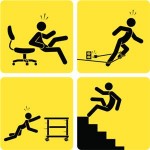

-
Before and after the fall
-
the feeling of a cold, clammy sweat
-
feel lightheaded, confused, or nauseated
-
have blurred vision or see spots
-
hear a ringing in your ears
-
yawn and breathe quickly and deeply.
If you feel these symptoms, lie down if possible; if not, sit with your head between your knees to encourage blood flow to your brain.
“You can try to awaken the person with a gentle shake, or by touching their face or calling their name.
Keep the person lying down for a few minutes and elevate the legs slightly, if possible. If available, a damp, cool cloth on the forehead can be helpful, especially if you’re in a warm room or outside on a hot day.
Vasovagal syncope
refers to faints caused by excessive stimulation of the vagus nerve, the part of the nervous system that regulates blood pressure and heart rate. In response to some trigger, the blood vessels in your legs relax and the heart rate slows, making it difficult for blood to return to the heart. Blood pressure drops, and down you go.
Strong emotion, such as a response to bad news, the sight of blood, or a feeling of panic or claustrophobia is sometimes triggering factor. Also, a bad coughing spell or strain to have a bowel movement, or even if you’ve been standing for a long time.
Vasovagal syncope tends to be more common in people under 35. With age, the nervous system doesn’t react as quickly, so these types of faints occur less frequently. After age 50, other, more dangerous causes become more prevalent, so fainting should be evaluated by a medical professional.
Orthostatic hypotension

Orthostatic hypotension is literally “low blood pressure when standing upright.” It’s also known as postural hypotension. A classic example is a 70-something person who’s been ill (and therefore not eating or drinking normally) and who faints right after getting out of bed in the morning.
Usually is a side effect of beta blockers (which reduce the heart rate) and alpha blockers (which can reduce blood pressure; they’re used in men to treat an enlarged prostate). Older folks are more prone to dehydration, as the sense of thirst diminishes over the years. Also, diseases such as diabetes, cancer, and Parkinson’s (all of which are more common with age) may cause orthostatic hypotension.
Abnormal heart rate :(Tachycardia or Bradycardia)
If your heart rate is very fast, your blood pressure may fall, and fainting may follow. A number of different heart conditions — from problems with the heart’s electrical system to defective valves — can trigger palpitations, a feeling that your heart is fluttering, racing, or missing a beat. Conversely, a very slow heart rate (known as bradycardia) can also cause you to faint. This condition is usually caused by electrical abnormalities in the heart or heart damage from a heart attack or other disease. Thyroid problems and certain medications can also lead to an abnormally slow or fast heart rate.
Finding the underlying cause

If a young, healthy person faints after an obvious vasovagal trigger, there’s not always a need to see a doctor. But if you faint for the first time after age 40, see a doctor explore all the potential causes. He or she should check your blood pressure (both sitting and standing, if orthostatic hypotension is suspected) and do an electrocardiogram (ECG), a test that checks for electrical problems with the heart. Your doctor should also review all your medications and change your prescriptions if necessary.
Autism: An evolutionary perspective,
Professor Simon Baron-Cohen, 1st Symposium of EPSIG, 2016
لتحديث نفسك






الانسان في القرآن
مجال البحث في مفردة (الإنسان) و (الإنس) في آيات القرآن
الإنْسَانْ : ذكرت في كتاب الله 56 ستٌ وخمسون مرة.
الإنس : ذكرت في كتاب الله 14 أربعة عشر مرة.
وبذلك يكون المجموع 70 مرة لكلا المفردتين
استخدامات مفردة “الإنسان في القرآن الكريم
-(الإنْسَانْ) :
ويُجمع في مفردة ( الْإنْسْ) فالارتباط المعنوي بين تلك المفردتين (الإنْسَانْ ، الإنس)
ومفردة الإنْسَانْ يقصد بها في كتاب الله : كل مخلوق من سلالة آدم عليه السلام ، وهي مفردة ذات دلالة شاملة لكل جنس ذكراً كان أم أنثى ، مؤمناً كان أو غير مؤمن ، ولم أرى أن هناك ارتباط مباشر بين مفردة (الناس) ومفردة (الإنسان) كما يقول بعض أهل اللغة فإن القرآن إنما اتفق فيه معنى الإنس والإنْسَانْ ولم يتفق فيه معنى النَّاس معهما وسيأتي تفصيل ذلك وإثباته في ثنايا ما سأعرضه بإذن الله.
ثبت بجلاء أن مفردة (الإنسان) عندما تذكر في كتاب الله فإنها تستعمل في سياق بيان الضعف في جانبين في مادة خلق ابن آدم وضعف نفسه وارتبط ذكر الإنسان بالنقص والجهل وكل سلوك مقيت يقترفه هذا المخلوق ، فكانت مفردة الإنسان مرادفة جامعة من جوامع الشر ، فيقترن مع ما يظهر منه من سوء وما يحيط به من حقارة وضعف وجهل وكذلك جمع (إنسان) وهو (الإنس) فلم تذكر في سياق إلا في سياق كسياق مفردة (الإنسان) ، ونصنف ذكر الإنسان على ضربين لا ثالث لهما ، أولهما بيان ضعف وهوان مادة الخلق ، وثانيهما ضعف نفسه وسوء طويته وركونه لشهواته ، وبالتالي فلدينا محورين للبحث أولهما “دلالة ضعف الجسد وحقارة مادة الخلق” ، والثاني “دلالة ضعف النفس وسوء الطوية” وسنبدأ في تصنيف الآيات القرآنية الدالة على ذلك بمشيئة الله.
أولاً : أمثلة على دلالة ضعف الجسد وحقارة مادة الخلق وهوانه على الله:
-
{ وَلَقَدْ خَلَقْنَا الإنْسَانْ مِنْ صَلْصَالٍ مِنْ حَمَإٍ مَسْنُونٍ } [الحجر:26]
وهنا يبين لنا الله جل وعلا حقارة مادة صنع الإنْسَانْ التي دفعت إبليس أن يتكبر عن السجود لهذا المخلوق .
{ خَلَقَ الإنْسَانْ مِنْ نُطْفَةٍ فَإِذَا هُوَ خَصِيمٌ مُبِينٌ } [النحل:4]
وهنا يبرز الله مرحلة أخرى من المراحل الضعيفة الحقيرة من خلق الإنْسَانْ وهو النطفة التي التي لا تكاد تذكر لحقارتها ودناءتها.
{ أَوَلَا يَذْكُرُ الإنْسَانْ أَنَّا خَلَقْنَاهُ مِنْ قَبْلُ وَلَمْ يَكُ شَيْئًا } [مريم:67]
ويذكر الله بأنه خلقه من لا شيء في صورة من صور التقريع واللوم والتذكير بأصل خلقته.
-
{ وَلَقَدْ خَلَقْنَا الإنْسَانْ مِنْ سُلَالَةٍ مِنْ طِينٍ } [المؤمنون:12]
فيبين أصل خلقة الإنْسَانْ ويعلمه بهوان أصله وحقارة منشأه وكيف حوله لمخلوق مكرم حسن المظهر والخلقة.
-
{ الَّذِي أَحْسَنَ كُلَّ شَيْءٍ خَلَقَهُ وَبَدَأَ خَلْقَ الإنْسَانْ مِنْ طِينٍ } [السجدة:7]
وهنا إظهار حسن الخلق وتمامه الذي بدأ بأهون مادة في الأرض.
{ أَوَلَمْ يَرَ الإنْسَانْ أَنَّا خَلَقْنَاهُ مِنْ نُطْفَةٍ فَإِذَا هُوَ خَصِيمٌ مُبِينٌ } [يس:77]
وأيضاً يشير البارئ المصور إلى النطفة الحقيرة التي استحالت خصام وهو لا يعي مبدأ خلقه وحقارة أصله فماذا كان أصله وإلى أين أضحى بعد ما كان.
{ خَلَقَ الإنْسَانْ مِنْ صَلْصَالٍ كَالْفَخَّارِ } [الرحمن:14]
وتستمر وتتوالى إشارات أصل خلق الإنْسَانْ من صلصال ومن طين ومن نطفة وارتباط تلك الإشارات والدلالات بمفردة الإنسان.
{ هَلْ أَتَى عَلَى الإنْسَانْ حِينٌ مِنَ الدَّهْرِ لَمْ يَكُنْ شَيْئًا مَذْكُورًا } [الإنسان:1]
ويعود ذكر أصل خلقة الإنْسَانْ إلى ما قبل النطفة والعلقة حين كان في صلب آباءه لا ذكر له ولا اسم يسمى به.
{ إِنَّا خَلَقْنَا الإنْسَانْ مِنْ نُطْفَةٍ أَمْشَاجٍ نَبْتَلِيهِ فَجَعَلْنَاهُ سَمِيعًا بَصِيرًا } [الإنسان:2]
فخلق له السمع والبصر بعد أن كان نطفة أمشاج.
{ فَلْيَنْظُرِ الإنْسَانْ إِلَى طَعَامِهِ } [عبس:24]
والنظر هنا يقود للدلالة على ضعف الإنْسَانْ وقصور قدرته أن ينبت طعامه أو يخلق ما يقيم حياته لولا أن الله هيأ رزقه وسخر له ما يغذيه ويقيم جسده.
{ لَقَدْ خَلَقْنَا الإنْسَانْ فِي أَحْسَنِ تَقْوِيمٍ } [التين:4]
ويعزو ربنا جلت قدرته تحويل وتقويم هذه المادة الحقيرة إلى نفسه جل وعلا لتصبح بعد تقويمها خلق حسن وصورة متناسقة وإذا واصلنا النظر في السياق نجد (ثم رددناه أسفل سافلين) .
{ فَلْيَنْظُرِ الإنْسَانْ مِمَّ خُلِقَ } [الطارق:5]
ويحث ربنا جلت قدرته الإنْسَانْ على النظر في أصل خلقته ليعلم قدره الحقيقي وأنه لولا كرامة الله له فهو لا يعدو كونه مادة حقيرة وضيعة.
وهكذا ففي ما سلف من مواضع نجد ارتباط ذكر مفردة الإنْسَانْ مرتبطةٌ بخلقهِ وقد ارتبطت مفردة (الخلق) بمفردة (الإنسان) في كل ستة عشر موضع في كتاب الله ، سوى المواضع التي أشار فيها ربنا جل وعلا لخلق الإنسان بمفردات ومعانٍ أخرى.
ثانيا : مفردة الإنْسَانْ للدلالة على ضعف نفسه وسوء طويته وركونه لشهواته:
وقد جمع ربنا جل وعلا في هذه الآيات وقرن مفردة الإنْسَانْ بأكثر الصفات سوءاً فاقترن الإنْسَانْ بالصفات التالية ( اليأس ، الكفر ، الإسراف في الذنب ، الظلم ، الخصام ، العجلة ، البخل والتقتير ، الجدال ، الجهل ، القنوط ، الإعراض ، الهلع والخوف ، ارتكاب الذنب، الطغيان ، الخسران ، الجحود) فارتبط كل خلق ذميم بمفردة الإنْسَانْ بل أتى معظمها بصيغة المبالغة (قنوط ، كفور ، قتور ، هلوع ، ظلوم) وكان للكفر النصيب الأكبر فارتبط الإنْسَانْ بالكفر بصيغه المختلفة في ثمانية مواضع ، وارتبط باليأس ثلاث مرات وهناك من الصفات السيئة ما ذكر أكثر من مرة كالجدل والظلم والآيات التي لم يرد فيها الذم للإنسان صراحة فقد ذمته ضمناً.
والآيات التي ذمت الإنسان وكفره وسوء رابطته مع ربه هي :
-
{ يُرِيدُ اللَّهُ أَنْ يُخَفِّفَ عَنْكُمْ وَخُلِقَ الإنْسَانْ ضَعِيفًا } [النساء:28]
فيبين الله جل وعلا مدى ضعف الإنْسَانْ ومراده جل وعلا بالتخفيف في التشريع مراعاة لما يكتنف خلق الإنْسَانْ من ضعف في نفسه قد يميل به إلى اقتراف الآثام بحثاً عن الشهوات.
{ وَإِذَا مَسَّ الْإِنْسَانَ الضُّرُّ دَعَانَا لِجَنْبِهِ أَوْ قَاعِدًا أَوْ قَائِمًا فَلَمَّا كَشَفْنَا عَنْهُ ضُرَّهُ مَرَّ كَأَنْ لَمْ يَدْعُنَا إِلَى ضُرٍّ مَسَّهُ كَذَلِكَ زُيِّنَ لِلْمُسْرِفِينَ مَا كَانُوا يَعْمَلُونَ } [يونس:12]
وهذه صورة من صور جحود الإنسان لربه ونسيانه لفضله عليه ، فإذا أصيب بالضر فزع للدعاء والتضرع فما أن يجيب الله دعاءه ويكفيه ويكشف ما به حتى نسي ما كان منه من تذلل وضعف وشكوى.
{ وَلَئِنْ أَذَقْنَا الْإِنْسَانَ مِنَّا رَحْمَةً ثُمَّ نَزَعْنَاهَا مِنْهُ إِنَّهُ لَيَئُوسٌ كَفُورٌ } [هود:9]
وهذه صورة بشعة من صور اليأس المقترن بالكفر فعندما ينزع الله صحة أو مال من ابن آدم (الإنسان) فهو يئوس من عودتها إليه بمعنى مصرُّ على اليأس يظهره دوماً في سره وعلانيته مظهراً التذمر المستمر والمتكرر ونسيان ما كان من سابقاً من يدٍ ونعمٍ أكرمه الله بها.
- وهكذا في ما يلي من آيات ذكر فيها الإنسان وذكر معه سوء طويته وخسة نفسه :
-
{ وَآتَاكُمْ مِنْ كُلِّ مَا سَأَلْتُمُوهُ وَإِنْ تَعُدُّوا نِعْمَتَ اللَّهِ لَا تُحْصُوهَا إِنَّ الْإِنْسَانَ لَظَلُومٌ كَفَّارٌ } [إبراهيم:344]
فهو ظالم لنفسه كافر بنعم الله عليه برغم أنه جل جلاله يُسأل ويعطي بلا عدد ولا حصر.
{ وَيَدْعُ الْإِنْسَانُ بِالشَّرِّ دُعَاءَهُ بِالْخَيْرِ وَكَانَ الْإِنْسَانُ عَجُولًا } [الإسراء:11]
فالإنسان لا يدرك خطورة الدعاء بالشر وتبعات إجابته فيدعو متضرعاً بحدوث الشر كما يتضرع ويخلص في الطلب بحدوث الخير غير مدرك لما سيتبع إجابة ذلك الدعاء.
{ وَإِذَا مَسَّكُمُ الضُّرُّ فِي الْبَحْرِ ضَلَّ مَنْ تَدْعُونَ إِلَّا إِيَّاهُ فَلَمَّا نَجَّاكُمْ إِلَى الْبَرِّ أَعْرَضْتُمْ وَكَانَ الْإِنْسَانُ كَفُورًا } [الإسراء:677]
من صور جحود الإنسان لفضل الله عليه ونسيان حاله عند رؤية هول الهلاك وتضرعه لله حتى إذا نجاه أعرض وعصى وقسي قلبه على ربه الذي كان به رؤوفاً رحيماً والإعراض بعد رؤية هذا الهول من أعظم صور الجحود والاستكبار والكفر.
{ وَإِذَا أَنْعَمْنَا عَلَى الْإِنْسَانِ أَعْرَضَ وَنَأَىٰ بِجَانِبِهِ وَإِذَا مَسَّهُ الشَّرُّ كَانَ يَئُوسًا } [الإسراء:833]
وفي هذه الآية صورة أخرى من فساد نفس الإنسان وسوء طويته فقدم تعالى حاله عند الإنعام وكيف أنه يعرض غير مستحضر لما أفضل الله عليه من خير ، وحين وقوع الشر عليه يئس متناسياً جاحداً بأن من بدأه بالنعم سبحانه قادر على كشف ما به من ضر.
-
{ قُلْ لَوْ أَنْتُمْ تَمْلِكُونَ خَزَائِنَ رَحْمَةِ رَبِّي إِذًا لَأَمْسَكْتُمْ خَشْيَةَ الْإِنْفَاقِ وَكَانَ الْإِنْسَانُقَتُورًا } [الإسراء:1000]
- يخبرنا جل وعلا عن الخصلة السيئة والصفة الذميمة في الإنسان وهي البخل والإمساك فلو كان يملك الإنفاق من خزائن الله التي لا تعلم ولا تعد ولا تنفد فإنه سيتردد في الإنفاق وتغلب صفة البخل والتقتير عليه ، فليحمد الناس ربهم أنه الكريم العظيم ، الحليم العليم لم يجعل خزائنه إلا بيده وحده سبحانه.
-
{ وَلَقَدْ صَرَّفْنَا فِي هَٰذَا الْقُرْآنِ لِلنَّاسِ مِنْ كُلِّ مَثَلٍ وَكَانَ الْإِنْسَانُ أَكْثَرَ شَيْءٍ جَدَلًا } [الكهف:544]
فعندما يكون ابن آدم في لبوس الإنسان فهو مجادل لا يكفيه ما ساق ربه من أمثلة وحكمة وفرقان وحجة بالغة ولا يزال يجادل حتى ولو رأى الحق رأي العين.
{ وَيَقُولُ الْإِنْسَانُ أَإِذَا مَا مِتُّ لَسَوْفَ أُخْرَجُ حَيًّا } [مريم:66]
وهذه صورة من صور كفر الإنسان بالبعث إذ يسأل سؤالا استنكارياً إنكارياً جحوداً واستهزاءً بحقيقة البعث لما أُشرب في نفسه من صفاقة وسوء أدب مع خالقه جلت قدرته
{ وَهُوَ الَّذِي أَحْيَاكُمْ ثُمَّ يُمِيتُكُمْ ثُمَّ يُحْيِيكُمْ إِنَّ الْإِنْسَانَ لَكَفُورٌ } [الحج:66]
وهي صيغة المبالغة والكثرة في الكفر مع لام التوكيد أي أنه برغم تعدد الأفعال الربانية بين الإماتة والإحياء فإن الإنسان بصبغته (الإنسانية) لكفور بربه وبقدرته وفعله الظاهر المعلوم ولكن لا ينطبق على ابن آدم المؤمن الطائع المطمئن قلبه بالإيمان
- 12{ إِنَّا عَرَضْنَا الْأَمَانَةَ عَلَى السَّمَاوَاتِ وَالْأَرْضِ وَالْجِبَالِ فَأَبَيْنَ أَنْ يَحْمِلْنَهَا وَأَشْفَقْنَ مِنْهَا وَحَمَلَهَا الْإِنْسَانُ إِنَّهُ كَانَ ظَلُومًا جَهُولًا } [الأحزاب:72]
- فقد اختصه –الإنسان- الله بالأمانة (الإرادة والتكليف) وجعله مخيراً في فعله تفضيلاً على سواه من المخلوقات وأعظمها السموات والأرض والجبال ولكنه كان ظلوماً لنفسه حين فرط في اختيار الخير واستبدله بالشر ، وجهولاً بما يجر عليه ذلك الفعل من عاقبة وبما أضاع بتفريطه من رفعة وثواب وفي ما سوى الإنسان من بني آدم من المؤمنين فلا ينطبق عليهم هذا النعت بالظلم والجهل ، وهذه الآية تنطوي على معانٍ عميقة قل أن يحاط بها وتفهم ولعلي إن شاء الله آتي عليها في مواضع أخرى.
-
{ خَلَقَ الْإِنْسَانَ مِنْ نُطْفَةٍ فَإِذَا هُوَ خَصِيمٌ مُبِينٌ } [النحل:4]
- وهنا يجمع الله جل وعلا للإنسان بين حقارة مادة خلقه وسوء طويته ونفسه في صورة بديعة إذ كان نطفة حقيرة قذرة خلقه الله منها وتفضل عليه وأكرمه ورزقه فيبادل ربه ويبارزه بالخصام والعداوة يبيْنُ عنها بلسانه الذي لم يكن شيئاً حين كان نطفة حقيرة ، ولم يتفكر مما خلق وكيف كان ومن أوجده ورزقه وجعل منه مخلوقاً حسن الخلق ناطق مفكر كاسب للرزق بما قدره الله له من مهارة وفطرة.
-
{ أَوَلَمْ يَرَ الْإِنْسَانُ أَنَّا خَلَقْنَاهُ مِنْ نُطْفَةٍ فَإِذَا هُوَ خَصِيمٌ مُبِينٌ } [يس:77]
وهذه صورة أخرى شبيهة بما سبق تبدأ بالاستفهام الاستنكاري وهي متسقة مع السياق الذي يسبقها ويليها .
{ فَإِذَا مَسَّ الْإِنْسَانَ ضُرٌّ دَعَانَا ثُمَّ إِذَا خَوَّلْنَاهُ نِعْمَةً مِنَّا قَالَ إِنَّمَا أُوتِيتُهُ عَلَىٰ عِلْمٍ بَلْ هِيَ فِتْنَةٌ وَلَٰكِنَّ أَكْثَرَهُمْ لَا يَعْلَمُونَ } [الزمر:499]
يدعو الإنسان عند حلول المصيبة ومجرد المس من الضر فإذا أعطاه الله من عطاءه وأكرمه من كرمه نسب ما حصل إليه لنفسه والعلم الذي تعلمه وهي صورة من صور الجحود الكفر الذي يقترفه الإنسان بحق ربه والظلم الذي يوقعه على نفسه.
{ لَا يَسْأَمُ الْإِنْسَانُ مِنْ دُعَاءِ الْخَيْرِ وَإِنْ مَسَّهُ الشَّرُّ فَيَئُوسٌ قَنُوطٌ } [فصلت:49]
فمهما تتابع عليه النعم فإنه لا يكتفي من الدعاء وطلب المزيد من الخير ولكنه إن أصيب بالشر مرة يئس وقنط من رحمة الله ونسي أن نعم الله كانت تتابع عليه وتتوالى إليه قبل هذا الشرّ ، ولو كان يخفي خلفه خيراً لا يتحصل إلا بذلك الشر.
-
{ وَإِذَا أَنْعَمْنَا عَلَى الْإِنْسَانِ أَعْرَضَ وَنَأَىٰ بِجَانِبِهِ وَإِذَا مَسَّهُ الشَّرُّ فَذُو دُعَاءٍ عَرِيضٍ } [فصلت:511]
وهذه صورة من صور اللؤم والجحود عند الإنسان فهو لا يتذكر ربه المنعم عليه عند حلول النعماء ولكن حين مساس الشر به يسهب في الدعاء والتضرع
{ فَإِنْ أَعْرَضُوا فَمَا أَرْسَلْنَاكَ عَلَيْهِمْ حَفِيظًا إِنْ عَلَيْكَ إِلَّا الْبَلَاغُ وَإِنَّا إِذَا أَذَقْنَاالْإِنْسَانَ مِنَّا رَحْمَةً فَرِحَ بِهَا وَإِنْ تُصِبْهُمْ سَيِّئَةٌ بِمَا قَدَّمَتْ أَيْدِيهِمْ فَإِنَّ الْإِنْسَانَ كَفُورٌ} [الشورى:488]
فهو فرح بالرحمة ظناً أنها رضى من الله والله لا يحب الفرحين ، وإن أصابته السيئة بسوءه وبما قدمت يده كان كفوراً بيد الله إليه ونعمته عليه.
{ وَجَعَلُوا لَهُ مِنْ عِبَادِهِ جُزْءًا إِنَّ الْإِنْسَانَ لَكَفُورٌ مُبِينٌ } [الزخرف:15]
- وهو قولهم بأن الملائكة بنات الله تعالى الله عن ذلك ، وقيل من عباده جزءاً أي معادلاً له تعالى سبحانه ، فكان هذا القول الشنيع يصدر من الإنسان فهو كفور جاحد لتفرد الله ووحدانيته ، ومبين لكفره بقوله البيِّن الواضح الذي ينبئ عن اعتقاده الفاسد هذا.
-
إِنَّ الْإِنْسَانَ خُلِقَ هَلُوعًا (19) إِذَا مَسَّهُ الشَّرُّ جَزُوعًا (20) وَإِذَا مَسَّهُ الْخَيْرُ مَنُوعًا(21) [المعارج]
- فالهلع من الصفات النفسية التي وجدت مع خلق آدم ويعني الخوف والجزع الشديد ، فهو في حال أصابه الشرّ والسوء كان جزعاً خائفاً منه مفتقداً للثقة برحمة الله لقلة إيمانه وطغيان سوء نفسه على ثقته بربه ، وإذا أصابه خير من الله كان جزعاً خائفاً أيضاً من فقدان هذا المال فيشح به خشيةً من نفاده وغيَّب عن قلبه أن ما أصابه من خير إنما هو بيد الله ومن آتاك خيراته قدير أن يتابع عليك النعم ، وإن أصابه سوء فالسوء أمر نسبيّ قد يحمل في طياته الخير.
-
أَيَحْسَبُ الْإِنْسَانُ أَلَّنْ نَجْمَعَ عِظَامَهُ (3) بَلَىٰ قَادِرِينَ عَلَىٰ أَنْ نُسَوِّيَ بَنَانَهُ (4) بَلْ يُرِيدُ الْإِنْسَانُ لِيَفْجُرَ أَمَامَهُ (5) يَسْأَلُ أَيَّانَ يَوْمُ الْقِيَامَةِ (6) فَإِذَا بَرِقَ الْبَصَرُ (7)وَخَسَفَ الْقَمَرُ (8) وَجُمِعَ الشَّمْسُ وَالْقَمَرُ (9) يَقُولُ الْإِنْسَانُ يَوْمَئِذٍ أَيْنَ الْمَفَرُّ (10)كَلَّا لَا وَزَرَ (11) إِلَىٰ رَبِّكَ يَوْمَئِذٍ الْمُسْتَقَرُّ (12) يُنَبَّأُ الْإِنْسَانُ يَوْمَئِذٍ بِمَا قَدَّمَ وَأَخَّرَ(13) بَلِ الْإِنْسَانُ عَلَىٰ نَفْسِهِ بَصِيرَةٌ (14) وَلَوْ أَلْقَىٰ مَعَاذِيرَهُ (15) [القيامة]
- وهذه الآيات الكريمة من سورة القيامة تمثل صورة دقيقة على وسوء طوية الإنسان إذ ينكر البعث فيؤكد ربنا جلت قدرته أنه لن يجمع عظامه فحسب بل تتعدى قدرته عز وجل أن يحيل تراب تلك العظام لإنسان حي حتى يصل لأطراف أصابعه فيخلقها بدقة مطلقة وقدرة عظيمة ، ثم إن الإنسان حال البعث والجمع يبحث عن مكان يلجأ إليه فراراً وهرباً من العقاب ونسي بسوء طويته أنه لا وزر ولا مهرب ولا مفر فأي مفر وملجأ وقد أعاده الله من تراب ؟
-
قُتِلَ الْإِنْسَانُ مَا أَكْفَرَهُ (17) مِنْ أَيِّ شَيْءٍ خَلَقَهُ (18) مِنْ نُطْفَةٍ خَلَقَهُ فَقَدَّرَهُ (19) ثُمَّ السَّبِيلَ يَسَّرَهُ (20) ثُمَّ أَمَاتَهُ فَأَقْبَرَهُ (21) ثُمَّ إِذَا شَاءَ أَنْشَرَهُ (22) كَلَّا لَمَّا يَقْضِ مَا أَمَرَهُ (23) فَلْيَنْظُرِ الْإِنْسَانُ إِلَىٰ طَعَامِهِ [عبس]
- وهنا (قُتِلَ) بصيغة لعن ، (مَا أَكْفَرَهُ)صيغة مبالغة وإكثار بمعنى ما أشد كفره وأكثره ، ثم كما اعتدنا عند ذكر الإنسان بهذه التسمية يسوق ربنا صور حقارة مادة الصنع وكيف أحالها الله بقدرته لهذا الخلق الدقيق العظيم الذي يتعالى به على ربه في حين أن أصله نطفة حقيرة.
-
يَا أَيُّهَا الْإِنْسَانُ مَا غَرَّكَ بِرَبِّكَ الْكَرِيمِ (6) الَّذِي خَلَقَكَ فَسَوَّاكَ فَعَدَلَكَ (7) فِي أَيِّ صُورَةٍ مَا شَاءَ رَكَّبَكَ (8) كَلَّا بَلْ تُكَذِّبُونَ بِالدِّينِ (99) [الإنفطار]
- وهنا يخاطب الكافر بنبز “الإنسان” ما أغواك وحَرَفَكَ عن عبادة ربك الكريم ؟ وهو جل وعلا أعلم بأن طاعته للشيطان ولنفسه الأمارة وراء كفره ، ثم يذكره بكينونته وكيف كان أن الله خلقه وسواه وعدل خلقته.
-
يَا أَيُّهَا الْإِنْسَانُ إِنَّكَ كَادِحٌ إِلَىٰ رَبِّكَ كَدْحًا فَمُلَاقِيهِ (6) فَأَمَّا مَنْ أُوتِيَ كِتَابَهُ بِيَمِينِهِ(7) فَسَوْفَ يُحَاسَبُ حِسَابًا يَسِيرًا (8) وَيَنْقَلِبُ إِلَىٰ أَهْلِهِ مَسْرُورًا (9) وَأَمَّا مَنْ أُوتِيَ كِتَابَهُ وَرَاءَ ظَهْرِهِ (10) فَسَوْفَ يَدْعُو ثُبُورًا (11) وَيَصْلَىٰ سَعِيرًا (12) إِنَّهُ كَانَ فِي أَهْلِهِ مَسْرُورًا (13) إِنَّهُ ظَنَّ أَنْ لَنْ يَحُورَ (14) بَلَىٰ إِنَّ رَبَّهُ كَانَ بِهِ بَصِيرًا(15)
- (الكدح) هو العمل السيئ والآية صورة من صور الوعيد ، وفي معناها الخاص قال فيه ابن عباس : هو أبي بن خلف ، وكدحه جده واجتهاده في طلب الدنيا ، وإيذاء الرسول عليه السلام ، والإصرار على الكفر . وفي معناه العام ومن سياق السورة هو كل عمل الدنيا ما اختلط من العمل بسوء أو كان عمل سوء فأما المؤمن فيحاسب على هذا الكدح (العمل السيئ) بيسر فيتجاوز عن هذه السيئات ، وأما الكافر فيؤتى كتابه وراء ظهره ويكون حسابه على كدحه عسير لا تجاوز فيه و مصيره إلى نار السعير ، أما العمل الصالح فهو من يشفع للعامل الكادح فيتيسر حسابه عن سواه .
-

-
فَأَمَّا الْإِنْسَانُ إِذَا مَا ابْتَلَاهُ رَبُّهُ فَأَكْرَمَهُ وَنَعَّمَهُ فَيَقُولُ رَبِّي أَكْرَمَنِ (15) وَأَمَّا إِذَا مَا ابْتَلَاهُ فَقَدَرَ عَلَيْهِ رِزْقَهُ فَيَقُولُ رَبِّي أَهَانَنِ (16) كَلَّا بَلْ لَا تُكْرِمُونَ الْيَتِيمَ (17) وَلَا تَحَاضُّونَ عَلَىٰ طَعَامِ الْمِسْكِينِ (18) وَتَأْكُلُونَ التُّرَاثَ أَكْلًا لَمًّا (19) وَتُحِبُّونَ الْمَالَ حُبًّا جَمًّا (20) كَلَّا إِذَا دُكَّتِ الْأَرْضُ دَكًّا دَكًّا (21) وَجَاءَ رَبُّكَ وَالْمَلَكُ صَفًّا صَفًّا(22) وَجِيءَ يَوْمَئِذٍ بِجَهَنَّمَ يَوْمَئِذٍ يَتَذَكَّرُ الْإِنْسَانُ وَأَنَّىٰ لَهُ الذِّكْرَىٰ (23) يَقُولُ يَا لَيْتَنِي قَدَّمْتُ لِحَيَاتِي (24) فَيَوْمَئِذٍ لَا يُعَذِّبُ عَذَابَهُ أَحَدٌ (25) وَلَا يُوثِقُ وَثَاقَهُ أَحَدٌ(26) [الفجر]
- (ابتلاه) أي اختبره بعطائه ونعمته فهو يعتقد أن ذلك رضا من الله عن سوء عمله ، فيقول أكرمنِي ربي فهو راضٍ عني وإن كان عمله عمل سوء ، وإذا اختبره بضيق رزق اعتقد أن عمله ليس مرضياً عند الله ، فيظن أن اللهَ هوَّن عبدهُ وإن كانَ عملهُ عمل خير ، ثم يصف هول الموقف العظيم وكيف أن الإنسان لا تنفعه الذكرى في ذلك الموقف ولا تمني العودة للدنيا إذ يعذَّب عذابا عظيماً ويوثق وثاقاً شديداً.
-
لَقَدْ خَلَقْنَا الْإِنْسَانَ فِي كَبَدٍ (4) أَيَحْسَبُ أَنْ لَنْ يَقْدِرَ عَلَيْهِ أَحَدٌ (5) يَقُولُ أَهْلَكْتُ مَالًا لُبَدًا (6) أَيَحْسَبُ أَنْ لَمْ يَرَهُ أَحَدٌ (7) أَلَمْ نَجْعَلْ لَهُ عَيْنَيْنِ (8) وَلِسَانًا وَشَفَتَيْنِ (9)وَهَدَيْنَاهُ النَّجْدَيْنِ (10) فَلَا اقْتَحَمَ الْعَقَبَةَ (111) [البلد]
- إن استقراء مفردة الإنسان عندما يترافق مع قراءة السياق يظهر بجلاء ما ذهبنا إليه في هذا البحث فهاهي الآيات المباركات من سورة البلد يلقي ربنا جلت قدرته اللوم على كل إنسان خلقه من العدم ويحسب أنه بلغ من القوة مبلغاً لا يغلبه فيه أحد ولا يقدر عليه (يضيق عليه الرزق) ثم يبين عناصر خلقه التي أصبح بوجودها خلقاً مستقيماً منتصباً يحصل كسبه وماله وبدونها فهو لا شيء ، وفي وجه آخر فإن (خلقنا الإنسان في كبد) صورة لضعف الخلقة إذ قال بعض المفسرين بأن الكبد هو الدم المتجمع المتكبد ويحسب بعد كينونته تلك أنه لن يقدر عليه أحد وهو خلق من ضعف وقذارة.
-
اقْرَأْ بِاسْمِ رَبِّكَ الَّذِي خَلَقَ (1) خَلَقَ الْإِنْسَانَ مِنْ عَلَقٍ (2) اقْرَأْ وَرَبُّكَ الْأَكْرَمُ (3)الَّذِي عَلَّمَ بِالْقَلَمِ (4) عَلَّمَ الْإِنْسَانَ مَا لَمْ يَعْلَمْ (5) كَلَّا إِنَّ الْإِنْسَانَ لَيَطْغَىٰ (6) أَنْ رَآهُ اسْتَغْنَىٰ (7) إِنَّ إِلَىٰ رَبِّكَ الرُّجْعَىٰ (88) [العلق]
- وهنا يبين ربنا جلت قدرته هوان خلق الإنسان وحقارة أصله ، وجهله لولا تعليم الله له ، وطغيانه إن أفضل الله عليه بالرزق وأغناه من فاقة ثم يؤكد على رجوع هذا الإنسان لربه فيحاسبه على ما أسرف فيه من سوء.
-
إِذَا زُلْزِلَتِ الْأَرْضُ زِلْزَالَهَا (1) وَأَخْرَجَتِ الْأَرْضُ أَثْقَالَهَا (2) وَقَالَ الْإِنْسَانُ مَا لَهَا (33) [الزلزلة]
- جاء في تفسير الطبري (كان ابن عباس يقول في ذلك ما حدثني ابن سنان القزاز ، قال : ثنا أبو عاصم ، عن شبيب ، عن عكرمة ، عن ابن عباس ، ( وقال الإنسان ما لها ) قال الكافر : ( يومئذ تحدث أخبارها ) وفي صحيح مسلم عن عبد الرحمن بن شماسة المهري قال : كنت عند مسلمة بن مخلد وعنده عبد الله بن عمرو بن العاص فقال عبد الله : لا تقوم الساعة إلا على شرار الخلق هم شر من أهل الجاهلية، لا يدعون الله بشيء إلا رده عليهم ، فبينما هم على ذلك أقبل عقبة بن عامر فقال له مسلمة : يا عقبة اسمع ما يقول عبد الله : فقال عقبة : هو أعلم، وأما أنا فسمعت رسول الله صلى الله عليه وسلم يقول : لا تزال عصابة من أمتي يقاتلون على أمر الله قاهرين لعدوهم لا يضرهم من خالفهم حتى تأتيهم الساعة وهم على ذلك . فقال عبد الله: أجل، ثم يبعث الله ريحاً كريح المسك مسها مس الحرير فلا تترك نفساً في قلبه حبة من الإيمان إلا قبضته، ثم يبقى شرار الناس عليهم تقوم الساعة ، وعن أنس – رضي الله عنه – أن رسول الله – صلى الله عليه وسلم – قال : ” لا تقوم الساعة حتى لا يقال في الأرض : الله الله ” ، وفي رواية : قال : ” لا تقوم الساعة على أحد يقول : الله الله ” . رواه مسلم ، وعن عبد الله بن مسعود – رضي الله عنه – قال : قال رسول الله – صلى الله عليه وسلم : ” لا تقوم الساعة إلا على شرار الخلق ” . رواه مسلم ، وروى أبو يعلى في مسنده ، والحاكم في مستدركه عن أبي سعيد مرفوعا : ( لا تقوم الساعة حتى لا يحج البيت ) . وروى السجزي عن ابن عمر رفعه : ( لا تقوم الساعة حتى يرفع الركن والقرآن ) .
- فكانت الآية الكريمة من سورة الزلزلة دلالة على أن الإنسان إشارة لشرار الخلق ممن تقوم عليهم الساعة ، ويسال الإنسان عما لا يُسأل عنه فلو كان من المؤمنين لجار لله وامتلأ رعباً وهلعاً من هذا الموقف العظيم ولكن جنس (الإنسان) ممن لا يؤمن يستنكر ويستفهم عما يحدث للأرض إذ زلزلت لأنه لم يستحضر قيام الساعة وعلاماتها.
-
إِنَّ الْإِنْسَانَ لِرَبِّهِ لَكَنُودٌ (6) وَإِنَّهُ عَلَىٰ ذَٰلِكَ لَشَهِيدٌ (7) وَإِنَّهُ لِحُبِّ الْخَيْرِ لَشَدِيدٌ (8)أَفَلَا يَعْلَمُ إِذَا بُعْثِرَ مَا فِي الْقُبُورِ (9) وَحُصِّلَ مَا فِي الصُّدُورِ (10) إِنَّ رَبَّهُمْ بِهِمْ يَوْمَئِذٍ لَخَبِيرٌ (11) [العاديات]
- ( إن الإنسان لربه لكنود ) قال ابن عباس ، ومجاهد ، وقتادة : ” لكنود ” : لكفور جحود لنعم الله تعالى . قال الكلبي : هو بلسان مضر وربيعة الكفور ، وبلسان كندة وحضرموت العاصي ، وقال الحسن : هو الذي يعد المصائب وينسى النعم . وقال عطاء : هو الذي لا يعطي في النائبة مع قومه . أقول : هذا يكفي لفهم استعمال مفردة الإنسان في هذا الموضع بأنه إشارة لسوء طويته وكفره وجحوده.
-
وَالْعَصْرِ (1) إِنَّ الْإِنْسَانَ لَفِي خُسْرٍ (2) إِلَّا الَّذِينَ آمَنُوا وَعَمِلُوا الصَّالِحَاتِ وَتَوَاصَوْا بِالْحَقِّ وَتَوَاصَوْا بِالصَّبْرِ (3) [العصر]
- فتسمية الإنسان لكل خاسر ولا يصح إطلاقها على المؤمنين من عملوا الصالحات فاستثناهم الله من الخسران المقتصر على الإنسان فصار نبزاً للخاسرين من البشر.
- وهكذا ارتبطت مفردة الإنسان بحقارة مادته وضعفها وحقارة نفسه وكفرها ، ومن حقارة نفسه أن وصاه ربه جلت قدرته وتقدست أسماؤه بوالديه في حين أن غريزته تجبره على الإحسان إليهما بغير وصية كما هي غريزة الحيوان مع أبويه ، ولكن الإنسان بسوء طويته تتشرب نفسه العقوق والكفر بالمنعم ، فالكفر بالله أعظم الكفر ، والعقوق صورة من صور الكفر التي تشيع بين بني الإنسان ، فلا عجب إن كان كفر بخالقه فكيف بما هو دون ذلك ؟.
- وتسمية “الإنسان” ذاتها تعود للنسيان عمداً وسهواً ، فكفره نسيان فضل ربه عليه ، ونسيان عاقبة ظلمه وطغيانه ، والإنسان ينسى إشارات ربه وتحذيره بما يصيبه من شرور ، وينسى إنعام ربه وخيراته بما يغدق عليه من نعم فكانت مفردة الإنسان جامعة لكل شرٍّ يقترفه فأتت هذه المفردة في القرآن الكريم لدلالتها على ضعف خلقته وخُلُقه.
- ولعلنا نتعلم من ذلك ونتمثل به في استعمالنا لتلك المفردة ، فنلاحظ استعمال المفردة في حياتنا على سبيل التكريم في أحايين كثيرة في الوقت الذي وجب أن تتماهى خطاباتنا ومقالاتنا ونتاجنا الفكري مع القرآن الكريم فنوظف المفردة بما يتفق مع التوظيف القرآني لها ، فتلامس الجانب السلبي إذا كانت في القرآن الكريم كذلك ، وتلامس الجانب الإيجابي إذا كانت في القرآن كذلك.
- ولا شك بأن التوظيف القرآني العجيب لمفردات اللغة العربية صورة بلاغية بديعة لم تحظى بالتحليل الكافي بل ونكاد نلحظ انفصال بين الخطاب الواقعي مع التوظيف القرآني للمفردات ، ولا تسلم من سوء الاستعمال هذا حتى المصنفات الإسلامية.
وإن كنا نعلم بداهة أن البلاغة هي من أعظم صور الإعجاز في القرآن الكريم فإننا للأسف وإن حاولنا تقفي تلك الصور البلاغية إلا أننا لم نلحظ انعكاس ذلك على الخطاب العربي و الإسلامي فأهملنا هذا الكنز الكبير واستبدلنا لغتنا باللغة الفرنسية لكتابة القوانين متذرعين بدقة اللغة الفرنسية في صياغة القوانين جهلا بما تحمله لغتنا الثرية من استعمالات متعددة ومتنوعة لمن تعرف على ذلك الثراء من خلال القرآن الكريم.
الإنْس
- ومفردة (الإنس) جمعٌ لمفردة (الإنسان) ودلالة ذلك توظيفها القرآني ، فكما استعملت مفردة الإنسان جامعة لجوامع السوء والشر ومقترنة بالصورة السلبية للبشر فقد استعملت مفردة (الإنس) بدلالة إلى (السوء الجمعي) ولم ترد مفردة (الإنس) ما لم يذكر في نفس الآية مفردة (الجن) وسنتبع نفس المنهجية في تحليل مفردة الإنسان فنقول وبالله التوفيق وعليه التوكل:
- ذكرت مفردة (الإنس) أربعة عشر مرة في كتاب الله ، لم ترد بمعزل على مفردة (الجن) إلا أن مفردة (الجن) أتت في كتاب الله (22) اثنتان وعشرون مرة ومرتان بقوله (الجان) فكان إحصاء مفردة الجن ، والجان (24) أربع وعشرون مرة بزيادة عشر مرات عن مفردة الإنس ، والله أعلم بمدلولات تلك الزيادة وارتباطها بتفوق الجان على بني الإنسان في بعض أوجه الخلق والقدرات التي حباهم الله بها .
- ويتبين أن كل سياق ذكرت فيه مفردة (الإنس) أتت بنعت سوء ووعيد فلو تتبعنا الآيات التي احتوت على مفردة الإنس لوجدنا ما يلي:
-
{ وَكَذَلِكَ جَعَلْنَا لِكُلِّ نَبِيٍّ عَدُوًّا شَيَاطِينَ الْإِنْسِ وَالْجِنِّ يُوحِي بَعْضُهُمْ إِلَى بَعْضٍ زُخْرُفَ الْقَوْلِ غُرُورًا وَلَوْ شَاءَ رَبُّكَ مَا فَعَلُوهُ فَذَرْهُمْ وَمَا يَفْتَرُونَ } [الأنعام:112]
- فأسمى ربنا (جلت قدرته) أعداء الأنبياء (الإنس) مع حلفائهم من الجن ووصفهم بالمفترين إذ يوحي بعضهم إلى بعض قولاً يصدق فيه بعضهم بعضاً حربا على أنبياء الله فيزينون لبعضهم البعض عملهم ، ويتنافسون في كل قول وفعل يحاربون به الله وأنبياءه.
-
{ وَيَوْمَ يَحْشُرُهُمْ جَمِيعًا يَا مَعْشَرَ الْجِنِّ قَدِ اسْتَكْثَرْتُمْ مِنَ الْإِنْسِ وَقَالَ أَوْلِيَاؤُهُمْ مِنَالْإِنْسِ رَبَّنَا اسْتَمْتَعَ بَعْضُنَا بِبَعْضٍ وَبَلَغْنَا أَجَلَنَا الَّذِي أَجَّلْتَ لَنَا قَالَ النَّارُ مَثْوَاكُمْ خَالِدِينَ فِيهَا إِلَّا مَا شَاءَ اللَّهُ إِنَّ رَبَّكَ حَكِيمٌ عَلِيمٌ } [الأنعام:128]
- فكانت تسمية أصحاب النار (الإنس) الذين تولوا الجن واستمتع بعضهم ببعض واستعانوا ببعضهم البعض من دون الله وعبدوا بعضهم من دون الله وأشركوهم بالله في صورة أصنام أو بإتيان السحر و بدعوة بعضهم بعض لمنهج الضلال والإضلال ونحو ذلك، فكان ذكر سيء غير حميد للإنس.
-
{ يَا مَعْشَرَ الْجِنِّ وَالْإِنْسِ أَلَمْ يَأْتِكُمْ رُسُلٌ مِنْكُمْ يَقُصُّونَ عَلَيْكُمْ آيَاتِي وَيُنْذِرُونَكُمْ لِقَاءَ يَوْمِكُمْ هَذَا قَالُوا شَهِدْنَا عَلَى أَنْفُسِنَا وَغَرَّتْهُمُ الْحَيَاةُ الدُّنْيَا وَشَهِدُوا عَلَى أَنْفُسِهِمْ أَنَّهُمْ كَانُوا كَافِرِينَ } [الأنعام:1300]
- فأسمى الكفار يوم الحساب (الإنس) وهو يستنطقهم ويستشهدهم جلت قدرته في موقف يوم القيامة حتى شهدوا على أنفسهم بكفرهم ، وهو ذات الموقف الذي جمع الله فيه الفريقين في موقف واحد وقضى عليهم بجهنم خالدين فيها إلا ما شاء سبحانه وتعالى.
- وكذلك الآيات التالية وظفت فيها مفردة (الإنس) لبيان لوصف كل أصحاب المنهج الفاسد والكفار الذين انتهى بهم كفرهم هم وأوليائهم من الجن إلى جهنم وبئس المصير إذ ركنوا إلى أنفسهم ولم يعلموا أن أجسادهم ضعيفة حقيرة الأصل والمنشأ وأنفسهم كافرة خبيثة ضعيفة الصمود أمام الشهوات :
-
{ قَالَ ادْخُلُوا فِي أُمَمٍ قَدْ خَلَتْ مِنْ قَبْلِكُمْ مِنَ الْجِنِّ وَالْإِنْسِ فِي النَّارِ كُلَّمَا دَخَلَتْ أُمَّةٌ لَعَنَتْ أُخْتَهَا حَتَّى إِذَا ادَّارَكُوا فِيهَا جَمِيعًا قَالَتْ أُخْرَاهُمْ لِأُولَاهُمْ رَبَّنَا هَؤُلَاءِ أَضَلُّونَا فَآتِهِمْ عَذَابًا ضِعْفًا مِنَ النَّارِ قَالَ لِكُلٍّ ضِعْفٌ وَلَكِنْ لَا تَعْلَمُونَ } [الأعراف:388]
- فأثمر ضعف نفوسهم أن خضعت بضعفها وهوانها وكفرها للضلال فكانت النار مثواهم جميعا لا يفيدهم لعن بعضهم لبعض ولا ندمهم على إطاعة الكفار في كفرهم وانحرافهم.
-
{ وَلَقَدْ ذَرَأْنَا لِجَهَنَّمَ كَثِيرًا مِنَ الْجِنِّ وَالْإِنْسِ لَهُمْ قُلُوبٌ لَا يَفْقَهُونَ بِهَا وَلَهُمْ أَعْيُنٌ لَا يُبْصِرُونَ بِهَا وَلَهُمْ آذَانٌ لَا يَسْمَعُونَ بِهَا أُولَئِكَ كَالْأَنْعَامِ بَلْ هُمْ أَضَلُّ أُولَئِكَ هُمُ الْغَافِلُونَ } [الأعراف:179]
- وهنا نلحظ كيف أن (الإنسان) و(الإنس) كانت قلوبهم وأعينهم وآذانهم تملكها أنفس ضعيفة ففقدت وظيفتها ووعيها وانقادت للضلال والغفلة فكانوا من حطب جهنم والعياذ بالله.
-
{ قُلْ لَئِنِ اجْتَمَعَتِ الْإِنْسُ وَالْجِنُّ عَلَى أَنْ يَأْتُوا بِمِثْلِ هَذَا الْقُرْآنِ لَا يَأْتُونَ بِمِثْلِهِ وَلَوْ كَانَ بَعْضُهُمْ لِبَعْضٍ ظَهِيرًا } [الإسراء:88]
- وهنا صورة من التحدي لجميع الإنس والجن أن يأتوا بمثل هذا القرآن ويبقى التحدي قائماً حتى قيام الساعة دليلا دامغاً على ضعف قدرة الإنسان ولو اجتمع مع نظراءه من الإنس والجن معاً فقدرتهم تبقى قاصرة ضعيفة.
-
{ وَحُشِرَ لِسُلَيْمَانَ جُنُودُهُ مِنَ الْجِنِّ وَالْإِنْسِ وَالطَّيْرِ فَهُمْ يُوزَعُونَ } [النمل:17]
- وهذه صورة من صور الضعف والهوان والتسخير الذي أكرم الله به سليمان واخضع الإنس والجن بسوئهم وتمردهم ويتلقون الأمر منه وينفذون رغماً عنهم.
- وهكذا نشهد فيما يلي كيف أن مفردة (الإنس) كانت لا تذكر إلا في سياق السوء والعذاب والإثم والكفر والخسران فكانت مستحقة أن تكون هي صيغة الجمع لمفردة (الإنسان).
-
{ وَقَيَّضْنَا لَهُمْ قُرَنَاءَ فَزَيَّنُوا لَهُمْ مَا بَيْنَ أَيْدِيهِمْ وَمَا خَلْفَهُمْ وَحَقَّ عَلَيْهِمُ الْقَوْلُ فِي أُمَمٍ قَدْ خَلَتْ مِنْ قَبْلِهِمْ مِنَ الْجِنِّ وَالْإِنْسِ إِنَّهُمْ كَانُوا خَاسِرِينَ } [فصلت:255]
-
{ وَقَالَ الَّذِينَ كَفَرُوا رَبَّنَا أَرِنَا اللَّذَيْنِ أَضَلَّانَا مِنَ الْجِنِّ وَالْإِنْسِ نَجْعَلْهُمَا تَحْتَ أَقْدَامِنَا لِيَكُونَا مِنَ الْأَسْفَلِينَ } [فصلت:29]
{ أُولَئِكَ الَّذِينَ حَقَّ عَلَيْهِمُ الْقَوْلُ فِي أُمَمٍ قَدْ خَلَتْ مِنْ قَبْلِهِمْ مِنَ الْجِنِّ وَالْإِنْسِ إِنَّهُمْ كَانُوا خَاسِرِينَ } [الأحقاف:18]
{ وَمَا خَلَقْتُ الْجِنَّ وَالْإِنْسَ إِلَّا لِيَعْبُدُونِ } [الذاريات:56]
{ يَا مَعْشَرَ الْجِنِّ وَالْإِنْسِ إِنِ اسْتَطَعْتُمْ أَنْ تَنْفُذُوا مِنْ أَقْطَارِ السَّمَاوَاتِ وَالْأَرْضِ فَانْفُذُوا لَا تَنْفُذُونَ إِلَّا بِسُلْطَانٍ } [الرحمن:33]
{ وَأَنَّا ظَنَنَّا أَنْ لَنْ تَقُولَ الْإِنْسُ وَالْجِنُّ عَلَى اللَّهِ كَذِبًا } [الجن:5]
{ وَأَنَّهُ كَانَ رِجَالٌ مِنَ الْإِنْسِ يَعُوذُونَ بِرِجَالٍ مِنَ الْجِنِّ فَزَادُوهُمْ رَهَقًا } [الجن:6]
- وهكذا فإن تسمية ابن آدم بالإنسان انما هو نبز واسم جامع لجوامع الضعف والشر في آن واحد فالإنسان يؤوس ظلوم كفور قنوط هلوع جزوع منوع عجول خصيم مجادل مبين مسرف كذاب قتور طاغٍ كنود ، ونأتي بعد كل هذا لنستعمل تلك المفردة لتعبر عن كل معاني السمو والقيم العالية وذا دلالة عميقة على الحب والخير والسلام وهو أبعد ما يكون عن هذه المعاني فأي انفصال نعيشه بين واقعنا وبين قرآننا ؟ وكيف لنا أن نصحح هذا المسار ونتنبه لخطورة هذا الإنحراف عن لغة القرآن متتبعين مصطلحات الغرب بلا تمييز لما في ذلك من تعارض مع دستورنا الخالد كلام الأحد الواحد القرآن الكريم.
- وصل اللهم على محمد وآله وصحبه أجمعين

لفظ الإنسان في القرآن:
- ورد لفظ “الإنسان” في 39 سورة من سور القرآن الكريم ، كلها مكية إلا 6 سور ، وهي : النساء والحج والأحزاب الرحمن والإنسان والزلزلة.
- تكرر هذا اللفظ 58مرة في 56 آية من القرآن الكريم .
- تكرر:
- في الإسراء 5 مرات.
- وفي القيامة 6 مرات.
- وفي العلق 3 مرات.
- وفي مريم ،والزمر ، وفصلت ، والشورى ، والرحمن ، والإنسان ، وعبس ، والفجر: 2 مرتين في كل سورة.
- وفي النساء ، ويونس ، وهود ، وإبراهيم ،والحجر ، والنحل ، والكهف ، والأنبياء ، والحج ، والمؤمنون ، والعنكبوت ، ولقمان ، والسجده ، والأحزاب ، ويس ، والزخرف ، والأحقاف، وق ، والمعارج ، والنازعات ، والانفطار ، والانشقاق ،والطارق ، والبلد ، والتين ، والزلزلة ، والعاديات ، والعصر: مرة واحدة في كل سورة.
- هذه الفائدة لمحبي الإحصاء والمهتمين بالعدد في القرآن الكريم.
- الإنسان في الآيات المذكورة هل يراد به الكافر أم المؤمن أم العموم ؟
- يمكن تقسيم الآيات إلى ثلاث أقسام بحسب المراد باللفظ كالآتي:
- العموم:
- (يُرِيدُ اللَّهُ أَنْ يُخَفِّفَ عَنْكُمْ وَخُلِقَ الْإِنْسَانُ ضَعِيفًا ) سورة النساء(28) مد
- ( وَلَقَدْ خَلَقْنَا الْإِنْسَانَ مِنْ صَلْصَالٍ مِنْ حَمَإٍ مَسْنُونٍ ) الحجر(26) مك
- (خَلَقَ الْإِنْسَانَ مِنْ نُطْفَةٍ فَإِذَا هُوَ خَصِيمٌ مُبِينٌ) النحل (4) مك
- (خُلِقَ الْإِنْسَانُ مِنْ عَجَلٍ سَأُرِيكُمْ آَيَاتِي فَلَا تَسْتَعْجِلُونِ) الانبياء (37) مك
- (وَلَقَدْ خَلَقْنَا الْإِنْسَانَ مِنْ سُلَالَةٍ مِنْ طِينٍ) المؤمنون (12) مك
- (الَّذِي أَحْسَنَ كُلَّ شَيْءٍ خَلَقَهُ وَبَدَأَ خَلْقَ الْإِنْسَانِ مِنْ طِينٍ) السجده (7) مك
- (وَلَقَدْ خَلَقْنَا الْإِنْسَانَ وَنَعْلَمُ مَا تُوَسْوِسُ بِهِ نَفْسُهُ وَنَحْنُ أَقْرَبُ إِلَيْهِ مِنْ حَبْلِ الْوَرِيدِ) ق (16) مك
- (خَلَقَ الْإِنْسَانَ) الرحمن (3) مد
- (خَلَقَ الْإِنْسَانَ مِنْ صَلْصَالٍ كَالْفَخَّارِ) الرحمن (14)
- (هَلْ أَتَى عَلَى الْإِنْسَانِ حِينٌ مِنَ الدَّهْرِ لَمْ يَكُنْ شَيْئًا مَذْكُورًا (1) إِنَّا خَلَقْنَا الْإِنْسَانَ مِنْ نُطْفَةٍ أَمْشَاجٍ نَبْتَلِيهِ فَجَعَلْنَاهُ سَمِيعًا بَصِيرًا (2)) الإنسان مد
- (يَوْمَ يَتَذَكَّرُ الْإِنْسَانُ مَا سَعَى) النازعات (35) مك
- (يَا أَيُّهَا الْإِنْسَانُ إِنَّكَ كَادِحٌ إِلَى رَبِّكَ كَدْحًا فَمُلَاقِيهِ) الانشقاق (6) مك
- (لَقَدْ خَلَقْنَا الْإِنْسَانَ فِي كَبَدٍ) البلد (4)مك
- (لَقَدْ خَلَقْنَا الْإِنْسَانَ فِي أَحْسَنِ تَقْوِيمٍ) التين (4) مك
- (خَلَقَ الْإِنْسَانَ مِنْ عَلَقٍ ) العلق(2)
- (عَلَّمَ الْإِنْسَانَ مَا لَمْ يَعْلَمْ ) العلق (5) مك
- (وَقَالَ الْإِنْسَانُ مَا لَهَا) الزلزلة (3) مد
- وهذه الآيات واضحة أنها في حق الإنسان عموماً المؤمن والكافر.
- محتمله:
- (وَيَدْعُ الْإِنْسَانُ بِالشَّرِّ دُعَاءَهُ بِالْخَيْرِ وَكَانَ الْإِنْسَانُ عَجُولًا ) الإسراء(11)
- وهذه الآية يراد بها الكافر والمؤمن وهي في حق الكافر آكد على معنى أنه يستعجل العذاب.
- (قُلْ لَوْ أَنْتُمْ تَمْلِكُونَ خَزَائِنَ رَحْمَةِ رَبِّي إِذًا لَأَمْسَكْتُمْ خَشْيَةَ الْإِنْفَاقِ وَكَانَ الْإِنْسَانُ قَتُورًا) الإسراء (100) مك
- وهذه يراد بها الكافر والمؤمن وهي في حق الكافر آكد ، لأن الأصل في المؤمن ألا يقتر وقد يحصل منه التقتير.
- (وَلَقَدْ صَرَّفْنَا فِي هَذَا الْقُرْآَنِ لِلنَّاسِ مِنْ كُلِّ مَثَلٍ وَكَانَ الْإِنْسَانُ أَكْثَرَ شَيْءٍ جَدَلًا ) الكهف(54) مك
- وهذه أيضاً في حق الكافر والمؤمن وهي آكد في حق الكافر ، والأصل أن المؤمن يبتعد عن الجدل وقد يحصل منه.
- (وَوَصَّيْنَا الْإِنْسَانَ بِوَالِدَيْهِ حُسْنًا وَإِنْ جَاهَدَاكَ لِتُشْرِكَ بِي مَا لَيْسَ لَكَ بِهِ عِلْمٌ فَلَا تُطِعْهُمَا إِلَيَّ مَرْجِعُكُمْ فَأُنَبِّئُكُمْ بِمَا كُنْتُمْ تَعْمَلُونَ ) العنكبوت(8) مك
- (وَوَصَّيْنَا الْإِنْسَانَ بِوَالِدَيْهِ حَمَلَتْهُ أُمُّهُ وَهْنًا عَلَى وَهْنٍ وَفِصَالُهُ فِي عَامَيْنِ أَنِ اشْكُرْ لِي وَلِوَالِدَيْكَ إِلَيَّ الْمَصِيرُ) لقمان (14) مك
- (وَوَصَّيْنَا الْإِنْسَانَ بِوَالِدَيْهِ إِحْسَانًا حَمَلَتْهُ أُمُّهُ كُرْهًا وَوَضَعَتْهُ كُرْهًا وَحَمْلُهُ وَفِصَالُهُ ثَلَاثُونَ شَهْرًا حَتَّى إِذَا بَلَغَ أَشُدَّهُ وَبَلَغَ أَرْبَعِينَ سَنَةً قَالَ رَبِّ أَوْزِعْنِي أَنْ أَشْكُرَ نِعْمَتَكَ الَّتِي أَنْعَمْتَ عَلَيَّ وَعَلَى وَالِدَيَّ وَأَنْ أَعْمَلَ صَالِحًا تَرْضَاهُ وَأَصْلِحْ لِي فِي ذُرِّيَّتِي إِنِّي تُبْتُ إِلَيْكَ وَإِنِّي مِنَ الْمُسْلِمِينَ ) الأحقاف(15) مك
- هذه في حق المؤمن والكافر وسياق الآية ترجح أن المخاطب بها المؤمن ، ولكن لا يمنع أن الكافر مطالب بمضمونها تبعاً.
- (إِنَّا عَرَضْنَا الْأَمَانَةَ عَلَى السَّمَاوَاتِ وَالْأَرْضِ وَالْجِبَالِ فَأَبَيْنَ أَنْ يَحْمِلْنَهَا وَأَشْفَقْنَ مِنْهَا وَحَمَلَهَا الْإِنْسَانُ إِنَّهُ كَانَ ظَلُومًا جَهُولًا ) الأحزاب(72) مد
- وهذه في حق المؤمن والكافر ، وإن كان تذييل الآياة بالوصفين ” ظَلُومًا جَهُولًا ” ترجح أن الكافر معني بهذه الآية أكثر من غيره.
- (أَوَلَمْ يَرَ الْإِنْسَانُ أَنَّا خَلَقْنَاهُ مِنْ نُطْفَةٍ فَإِذَا هُوَ خَصِيمٌ مُبِينٌ) يس (77) مك
- هذه الآية تصدق في حق المؤمن والكافر ، لكن سياق الآيات يدل على أن الكافر هو المعني في الآية.
- (فَإِنْ أَعْرَضُوا فَمَا أَرْسَلْنَاكَ عَلَيْهِمْ حَفِيظًا إِنْ عَلَيْكَ إِلَّا الْبَلَاغُ وَإِنَّا إِذَا أَذَقْنَا الْإِنْسَانَ مِنَّا رَحْمَةً فَرِحَ بِهَا وَإِنْ تُصِبْهُمْ سَيِّئَةٌ بِمَا قَدَّمَتْ أَيْدِيهِمْ فَإِنَّ الْإِنْسَانَ كَفُورٌ) الشورى (48) مك
- واللفظة الأولى تصلح في حق المؤمن والكافر ،إلا أن يكون المراد بالفرح هو البطر ، وأما اللفظة الثانية فهي قطعاً في حق الكافر.
- الكافر:
- (وَإِذَا مَسَّ الْإِنْسَانَ الضُّرُّ دَعَانَا لِجَنْبِهِ أَوْ قَاعِدًا أَوْ قَائِمًا فَلَمَّا كَشَفْنَا عَنْهُ ضُرَّهُ مَرَّ كَأَنْ لَمْ يَدْعُنَا إِلَى ضُرٍّ مَسَّهُ كَذَلِكَ زُيِّنَ لِلْمُسْرِفِينَ مَا كَانُوا يَعْمَلُونَ) يونس (12) مك
- وهذه في حق الكافر بدليل تذييل الآية.
- (وَلَئِنْ أَذَقْنَا الْإِنْسَانَ مِنَّا رَحْمَةً ثُمَّ نَزَعْنَاهَا مِنْهُ إِنَّهُ لَيَئُوسٌ كَفُورٌ (9) وَلَئِنْ أَذَقْنَاهُ نَعْمَاءَ بَعْدَ ضَرَّاءَ مَسَّتْهُ لَيَقُولَنَّ ذَهَبَ السَّيِّئَاتُ عَنِّي إِنَّهُ لَفَرِحٌ فَخُورٌ) هود (10) مك
- وهذه أيضا في حق الكافر بدليل الآية التي تليها .
- (وَآَتَاكُمْ مِنْ كُلِّ مَا سَأَلْتُمُوهُ وَإِنْ تَعُدُّوا نِعْمَةَ اللَّهِ لَا تُحْصُوهَا إِنَّ الْإِنْسَانَ لَظَلُومٌ كَفَّارٌ ) ابراهيم(34) مك
- (وَإِذَا أَنْعَمْنَا عَلَى الْإِنْسَانِ أَعْرَضَ وَنَأَى بِجَانِبِهِ وَإِذَا مَسَّهُ الشَّرُّ كَانَ يَئُوسًا) الإسراء (83) مك
- (وَإِذَا مَسَّكُمُ الضُّرُّ فِي الْبَحْرِ ضَلَّ مَنْ تَدْعُونَ إِلَّا إِيَّاهُ فَلَمَّا نَجَّاكُمْ إِلَى الْبَرِّ أَعْرَضْتُمْ وَكَانَ الْإِنْسَانُ كَفُورًا) الإسراء (67) مك
- (وَيَقُولُ الْإِنْسَانُ أَئِذَا مَا مِتُّ لَسَوْفَ أُخْرَجُ حَيًّا (66) أَوَلَا يَذْكُرُ الْإِنْسَانُ أَنَّا خَلَقْنَاهُ مِنْ قَبْلُ وَلَمْ يَكُ شَيْئًا (67)) مريم مك
- (وَهُوَ الَّذِي أَحْيَاكُمْ ثُمَّ يُمِيتُكُمْ ثُمَّ يُحْيِيكُمْ إِنَّ الْإِنْسَانَ لَكَفُورٌ) الحج (66)مد
- (وَإِذَا مَسَّ الْإِنْسَانَ ضُرٌّ دَعَا رَبَّهُ مُنِيبًا إِلَيْهِ ثُمَّ إِذَا خَوَّلَهُ نِعْمَةً مِنْهُ نَسِيَ مَا كَانَ يَدْعُو إِلَيْهِ مِنْ قَبْلُ وَجَعَلَ لِلَّهِ أَنْدَادًا لِيُضِلَّ عَنْ سَبِيلِهِ قُلْ تَمَتَّعْ بِكُفْرِكَ قَلِيلًا إِنَّكَ مِنْ أَصْحَابِ النَّارِ ) الزمر(8)
- (فَإِذَا مَسَّ الْإِنْسَانَ ضُرٌّ دَعَانَا ثُمَّ إِذَا خَوَّلْنَاهُ نِعْمَةً مِنَّا قَالَ إِنَّمَا أُوتِيتُهُ عَلَى عِلْمٍ بَلْ هِيَ فِتْنَةٌ وَلَكِنَّ أَكْثَرَهُمْ لَا يَعْلَمُونَ) الزمر (49) مك
- (لَا يَسْأَمُ الْإِنْسَانُ مِنْ دُعَاءِ الْخَيْرِ وَإِنْ مَسَّهُ الشَّرُّ فَيَئُوسٌ قَنُوطٌ (49) وَلَئِنْ أَذَقْنَاهُ رَحْمَةً مِنَّا مِنْ بَعْدِ ضَرَّاءَ مَسَّتْهُ لَيَقُولَنَّ هَذَا لِي وَمَا أَظُنُّ السَّاعَةَ قَائِمَةً وَلَئِنْ رُجِعْتُ إِلَى رَبِّي إِنَّ لِي عِنْدَهُ لَلْحُسْنَى فَلَنُنَبِّئَنَّ الَّذِينَ كَفَرُوا بِمَا عَمِلُوا وَلَنُذِيقَنَّهُمْ مِنْ عَذَابٍ غَلِيظٍ (50) وَإِذَا أَنْعَمْنَا عَلَى الْإِنْسَانِ أَعْرَضَ وَنَأَى بِجَانِبِهِ وَإِذَا مَسَّهُ الشَّرُّ فَذُو دُعَاءٍ عَرِيضٍ (51)) فصلت مك
- (وَجَعَلُوا لَهُ مِنْ عِبَادِهِ جُزْءًا إِنَّ الْإِنْسَانَ لَكَفُورٌ مُبِينٌ ) الزخرف (15)مك
- وجميع هذه الآيات السابقة واضحة أنها في حق الإنسان الكافر.
- (إِنَّ الْإِنْسَانَ خُلِقَ هَلُوعًا (19) إِذَا مَسَّهُ الشَّرُّ جَزُوعًا (20) وَإِذَا مَسَّهُ الْخَيْرُ مَنُوعًا (21)) المعارج مك
- وهذه في حق الكافر بدليل الاستثناء في الآية 22
- ( أَيَحْسَبُ الْإِنْسَانُ أَلَّنْ نَجْمَعَ عِظَامَهُ (3) بَلَى قَادِرِينَ عَلَى أَنْ نُسَوِّيَ بَنَانَهُ (4) بَلْ يُرِيدُ الْإِنْسَانُ لِيَفْجُرَ أَمَامَهُ (5) يَسْأَلُ أَيَّانَ يَوْمُ الْقِيَامَةِ (6) فَإِذَا بَرِقَ الْبَصَرُ (7) وَخَسَفَ الْقَمَرُ (8) وَجُمِعَ الشَّمْسُ وَالْقَمَرُ (9) يَقُولُ الْإِنْسَانُ يَوْمَئِذٍ أَيْنَ الْمَفَرُّ (10) كَلَّا لَا وَزَرَ (11) إِلَى رَبِّكَ يَوْمَئِذٍ الْمُسْتَقَرُّ (12) يُنَبَّأُ الْإِنْسَانُ يَوْمَئِذٍ بِمَا قَدَّمَ وَأَخَّرَ (13) بَلِ الْإِنْسَانُ عَلَى نَفْسِهِ بَصِيرَةٌ (14) وَلَوْ أَلْقَى مَعَاذِيرَهُ (15)) القيامه مك
- (أَيَحْسَبُ الْإِنْسَانُ أَنْ يُتْرَكَ سُدًى) القيامه (36)مك
- والإنسان في سورة القيامة هو الكافر بدليل السياق.
- (قُتِلَ الْإِنْسَانُ مَا أَكْفَرَهُ) عبس (17)مك
- (فَلْيَنْظُرِ الْإِنْسَانُ إِلَى طَعَامِهِ) عبس (24)مك
- وكذلك هنا هو الإنسان الكافر.
- (يَا أَيُّهَا الْإِنْسَانُ مَا غَرَّكَ بِرَبِّكَ الْكَرِيمِ) الانفطار (6)مك
- وكذلك هنا المراد الكافر.
- (فَلْيَنْظُرِ الْإِنْسَانُ مِمَّ خُلِقَ) الطارق (5)مك
- وهنا يترجح أن المراد الإنسان الكافر ،وإن كان المؤمن مطلوب منه النظر ليزداد إيماناً.
- (فَأَمَّا الْإِنْسَانُ إِذَا مَا ابْتَلَاهُ رَبُّهُ فَأَكْرَمَهُ وَنَعَّمَهُ فَيَقُولُ رَبِّي أَكْرَمَنِ (15) وَأَمَّا إِذَا مَا ابْتَلَاهُ فَقَدَرَ عَلَيْهِ رِزْقَهُ فَيَقُولُ رَبِّي أَهَانَنِ (16)) الفجر
- (وَجِيءَ يَوْمَئِذٍ بِجَهَنَّمَ يَوْمَئِذٍ يَتَذَكَّرُ الْإِنْسَانُ وَأَنَّى لَهُ الذِّكْرَى) الفجر (23)مك
- وكذلك هنا في سورة الفجر فهي في حق الإنسان الكافر بدليل السياق.
- (كَلَّا إِنَّ الْإِنْسَانَ لَيَطْغَى (6) أَنْ رَآَهُ اسْتَغْنَى (7)) العلق مك
- (إِنَّ الْإِنْسَانَ لِرَبِّهِ لَكَنُودٌ) العاديات (6)مك
- (إِنَّ الْإِنْسَانَ لَفِي خُسْرٍ ) العصر (2)مك
- وكذلك في سورة العلق والعاديات والعصر فالمراد هو الكافر بدليل الوصف
أشهر 10 أساليب تستخدمها السياسة و الدعاية والاعلام للتأثير على عقلك
1- التكرار والتأكيد
التكرار والتأكيد الغير مبرر هما المفتاح السحري لزرع أي فكرة داخل عقل الجمهور المستهدف ، يتم اختيار فكرة أو شعار بسيط أو لفظ جذاب وبالتكرار تتحول الفكرة أو المنتج إلى جزء من حياة المتلقي وأحد المكونات الأساسية لوعيه.
يعمد المعلنون إلى التكرار المستمر لشعاراتهم وحملاتهم الإعلانية التي تلاحق الناس أينما ذهبوا “عرض الإعلانات في أكثر من قناة – إعلانات الشوارع – الإعلان في الصحف وغيرها” ، وقد يلجأ البعض إلى التكرار في عرض إعلاناتهم غير المباشرة ليحصدوا نتائج أكثر فعالية من الإعلان المباشر عندما يكون التصريح مثيرًا للحساسية أو الرفض، إذ دلت إحدى الدراسات على أن تكرار ظهور أحد نجوم السينما، وهو يدخن خلال الفيلم لأربع مرات، قد يؤدي إلى زرع صورة إيجابية للتدخين عند المراهقين المعجبين بهذا النجم، مما يعطي دلالة واضحة على أثر الإعلان غير المباشر في بث الرسائل الإعلانية مع التكرار المستمر، وهو أمر يزداد خطورة عندما يقترن بالتصريح المباشر والموجه.
الأمر لا يقتصر على المعلنين، بل ينطبق تماما على السياسيين وصناع الرأى كذلك، كم مرة ذكر رموز نظام بوش كلمات “الإرهاب – أسلحة الدمار” قبل الحرب على العراق ، يمكنك مشاهدة هذا الملخص “التعبيري” لخطاب بوش الأخير قبل الحرب على العراق.
2- الاعتماد على الشخصيات اللامعة والنخب والرموز
حيث تميل شركات الدعاية المحلية والعالمية إلى التسويق لمنتجاتها باستخدام الرموز “غالبًا الفنانين والرياضيين” عبر ثلاث مستويات مختلفة، الأول هو ظهور الشخصية بصحبة المنتج في الإعلان “يستخدم في الأفلام أحيانا” والثاني هو ظهور الشخصية وهي تستخدم المنتج (ملابس، عطور، مشروبات، أدوات تجميل)، أما الثالث فهو قيام الشخصية بتوجيه الجمهور لاستخدام هذا المنتج بشكل مباشر.
3- التوصية من قبل مختص واستخدام الدراسات العلمية والأكاديمية
يختلف هذا الأسلوب عن سابقه أن الشخصية المطروحة ليست بالضرورة أن تكون شخصية لامعة، يكفي تقديمه كمتخصص في مجاله “طبيب ينصح بنوع معين من الأطعمة – أخصائي موضة ينصح بماركة معينة من الملابس” أوما شابه ذلك.
الأمر ذاته يتم في السياسة فالسياسيون يميلون دومًا لتوظيف الأكاديميين والمتخصصين من أجل قراراتهم السياسية عبر الظهور في وسائل الإعلام لتجميل هذه القرارات وتزيينها للناس.
4- إطلاق الشعارات الرنانة
والشعار هو جملة رمزية تشمل تصنيفًا أو قالبًا أوصورةً نمطيةً تهدف إلى استثارة المشاعر، وهو أسلوب شائع في الدعايات التجارية والسياسية على السواء كما هو معروف.
يتم الأمر عبر تعميم أحد الشعارات المنتقاة بعناية كعنوان عريض لكل حملة إعلانية، ومن ذلك مثلا تأكيد أحد أشهر معاجين الأسنان في أمريكا على شعار (النفَس المنعش)، أكثر من التذكير بالهدف الرئيسي من تنظيف الأسنان وهو حمايتها من التسوس، إذ دلت الدراسات التي قام بها المنتجون على أن اهتمام المستهلك ينصب عادة على رائحة الفم الطيبة أكثر من صحة الأسنان. وهكذا يعتمد المعلنون على ربط أهدافهم الإعلانية بأكثر الشعارات جاذبية، وبغض النظر عن مصداقيتها، وصولاً إلى الربط اللاشعوري بين الشعار والمعلن عنه حتى يغدو مجرد تذكر المستهلك لرائحة الفم الطيبة محرضًا تلقائيًا على استحضار صورة ذلك المعجون بالرغم من أن أغلب المعاجين قد تشاركه في هذه الخاصية.
نعم نستطيع “Yes we can” شعار حملة أوباما الانتخابية.
الأمر ذاته يتم في السياسة وبخاصة في الحملات الانتخابية حيث يختار الحزب أوالمرشح شعارًا يهدف إلى ربطه في أذهان الناخبين، حتى و لو لم يكن برنامجه الانتخابي يحتوي على تفاصيل تحقيق هذا الشعار، وحتى وإن كان هناك مرشحون آخرون أقرب منه لتحقيق شعاره، فإن النجاح غالبا مايكون حليف ذلك المرشح الذي ينجح في ربط نفسه بشعار محبب وقريب إلى أذهان الناس.
كما يميل السياسيون لاستخدام الشعارات في حديثهم للجماهير كوعود التنمية والمستقبل الأفضل وأحلام الأجيال القادمة.
مصر أد الدنيا …مصر أم لدنيا ..
5- خلق المشكلة “الحاجة” وتقديم الحل
ينقسم الإعلان في هذه الحالة إلى قسمين، القسم الأول يطرح مشكلة تواجه شريحة معينة من المستهلكين كمثل مشكلة الأمهات مع أطفالهم حديثي الولادة سواء في الطعام “ألبان الأطفال – أطعمة الأطفال” أو في العناية الصحية والنظافة “شامبو – صابون مطهر” أومشكلة البلل “حفاضة” وفي الجزء الثاني يتم تقديم المنتج المستهدف وربطه في الذهن بوصفه حلًا للمشكلة.
الأمر ذاته يستخدم في السياسة ولكن بشكل آخر، فحين ترغب السلطة في تمرير قرار ما تقوم بإشعار مواطنيها بمشكلة ما “سواء بتكبير مشكلة موجودة سلفًا والتركيز عليها أو حتى بخلق مشكلة ليست موجودة من الأساس” ثم تقديم القرار المنتظر كحل سحرى محدد سلفًا لهذه المشكلة، والمثال الأشهر هو قيام بعض الحكومات بإشعار مواطنيها أنهم واقعون تحت خطر تهديد أمني حقيقى لتبرير استخدام إجراءات قمعية.
http://www.alghad.tv/%D8%A7%D9%84%D8%AC%D9%8A%D8%B4-%D8%A7%D9%84%D9%85%D8%B5%D8%B1%D9%8A-%D9%8A%D8%AA%D8%AF%D8%AE%D9%84-%D9%84%D8%AD%D9%84-%D8%A3%D8%B2%D9%85%D8%A9-%D9%84%D8%A8%D9%86-%D8%A7%D9%84%D8%A3%D8%B7%D9%81%D8%A7/
6- إثارة الغرائز
يكاد يكون هذا النمط الإعلاني أحد أكثر الأنماط رواجًا، إذ يستغل المعلن مساحة الحرية التي يتيحها النظام الليبرالي المهيمن عالميًا في العبث بغرائز المتلقي لتلقينه ما يريد.
تحتل السلعة مكانًا هامشياً في هذا النمط، بينما تفرد مساحات كبيرة للصور والمشاهد المثيرة، أو يمتد الأمر لربط الشيء المعلن عنه بغريزة ما كأن يصبح إشباعها متعلقًا بهذا الشيء، ومن ذلك ربط تدخين السجائر بالرجولة، واستخدام بعض العطور بالجاذبية الجنسية وهكذا.
ويعتبر هذا النمط من أشد أنواع الإعلان خطورة حيث يتم استحلال استثارة غرائز الإنسان لأجل ترويج سلعة تجارية، بل والأنكى أن يتم تنميط الإنسان نفسه “خاصة المرأة” لتصبح سلعة يُتاجر بها، جدير بالذكر أن هناك العديد من المنظمات النسائية في أوروبا وأمريكا والتى تعمل على مناهضة استخدام المرأة كوسيلة للترويج التجاري.
المضامين ذاتها يتم توظيفها سياسيًا، هذه المرة بهدف شغل الجماهير وإلهائها حتى لا تتفرغ لمتابعة الشأن العام، ويتفرع عن هذا النمط استغلال حاجة الناس إلى الترفيه وإغراق وسائل الإعلام بالأفلام والمسلسلات والبرامج الترفيهية.
7- أسلوب القطيع
يعتمد على الغريزة البشرية في الانضمام إلى الجانب المنتصر من خلال التأكيد أن الجانب المختار لا يمكن مقاومته ومن الأفضل الانضمام إليه، حيث يستغل المعلنون ميل الجماهير للتماهي مع الثقافة السائدة في كل شيء حتى في المنتجات التي يستهلكونها، لذا يميل المعلنون لترويج منتجاتهم أنها الأكثر استخدامًا والأكثر شعبية والأكثر تفضيلًا من جهة الناس، وقد يستدلون على ذلك ببيانات وإحصاءات حقيقية أو مخادعة، الأمر يتطور إلى قيام المعلنين بإظهار آراء بعض المستهلكين في منتجاتهم.
تستخدم هذه الاستراتيجية في السياسة بشكل أكبر حيث يعشق السياسيون تقديم أنفسهم بصفتهم معشوقو الجماهير، كما يميلون لإضفاء صفة الإجماع الشعبي على تصرفاتهم وقراراتهم، وبينما يقوم الإعلام بترويج هذه الصورة التي تجتذب الجماهير المترددة، تخشى الأقلية المعارضة من مخالفة النمط أو النسق السائد في المجتمع فتضطر إلى السكوت، الأمر الذي يعرف بـ”نظرية الأقلية الصامتة”.
8- القولبة والتنميط
تستخدم هذه الخطة بشكل أوضح في الدعاية السياسية، فوسائل الإعلام لم تنجح في شيء كنجاحها في صناعة القوالب والصور النمطية، ولم تفشل في شيء كفشلها في عكس التنوعات والاختلافات؛ ذلك لكون المحتوى الإعلامي تعميمي بشكل كبير ويميل لصناعة الأنماط أو القوالب.
والنمط “Stereotype” هو مفهوم مستعار من عالم الطباعة ويعنى الصورة طبق الأصل، وفي صناعتها يوصف حالة الميل إلى اختزال المعلومات والمدركات في قوالب جامدة يتم تسكين الناس والأحداث خلالها والتعامل معهم وفقها، ويمثل القالب غالبًا رأيًا عاطفيًّا أوجانبًا أحاديًّا أو حكمًا متعجلًا أو صورة مشوهة تتم صناعتها بشكل مدروس غالبًا وعفوي أحيانًا.
إذن فالقولبة عملية مخطط لها غالبًا لأجل اختزال صورة شخص أو فئة أو جماعة أو حزب أو شعب، في مجموعة قليلة من السمات قد تكون مغلوطة ويتم استدعاء أحكام الجماهير وردود الأفعال وفقًا لهذا القالب وهذه العملية أحد أكبر عمليات الظلم المُمَنهج في التاريخ ويتم استخدامها لترويج أفكار فاشية وعنصرية ضد فئات اجتماعية بعينها.
لكن، كيف تتم صناعة النمط؟
ببساطة عبر صناعة ما يعرف بـ”الارتباط الشَّرطيّ” حيث يتم تكييف النمط أو الصورة أولًا، ثم يتم استدعاؤه إلى الذهن مع كل خبر أوحادثة لهذه الجماعة أو الفئة ومع مرور الوقت وترسخ العلاقة الشَّرطية تقوم الجماهير بصناعة هذا الربط أوتوماتيكيا دون الحاجة لوسائل الإعلام بناء على النمط السلبي الذي استنبطته.
انظر مثلا إلى صورة الصعيدي المصري في دراما الثمانينات والتسعينات أو صورة الإسلامي في أفلام عادل إمام أو صورة المسلم في الإعلام الأمريكي بعد أحداث 11 سبتمبر”.

9- إطلاق تسميات مخادعة أو أقل حدة
تتحكم وسائل الإعلام في المفاهيم والمصطلحات التي تتداولها وتسعى لتدويلها بين الناس، إذ تتجنب غالباً التعرض المباشر للقضايا التي ترغب في تحويرها أو تغييرها، وإنما تعمل على إعادة صياغتها بلغة جديدة تتناسب مع سياساتها وبثها بين الناس الذين يتقبلونها لا شعوريًا على المدى الطويل.
على مستوى الإعلانات الاستهلاكية تستخدم هذه التقنية في الترويج للمنتجات التي قد لاتكون مقبولة من النمط الاجتماعي السائد كترويج الخمور في مجتمع يرفضها حيث يتم تسميتها باسم مختلف تلافيًا لردود الأفعال المتوقعة للرأى العام.
سياسيا تستخدم هذه التقنية بشكل موسع حيث يتم تسمية الحرب بـ”نشر الديمقراطية” أو”الحرب على الإرهاب” كما تتم تسمية الهزيمة بـ”النكسة أو الإخفاق”، ويتم تسمية رفع الدعم مثلا بتحرير الاقتصاد.
10- الأمر المباشر
يعتمد هذا الأسلوب على تبسيط عملية اتخاذ القرار باستخدام صور أو عبارات توجه الجمهور للفعل المطلوب مباشرة وإلغاء أي خيارت أخرى متاحة ويتم مزج هذا الأسلوب مع طريقة استخدام الشخصيات اللامعة والرموز حتى تكون الأمور أكثر تقبلًا وتستخدم هذه الخطة في المنتجات الاستهلاكية وفي الدعاية الانتخابية حيث تستخدم الشخصيات العامة لأجل توجيه الأمر إلى الجماهير لانتخاب حزب أوشخصية بعينها أوحتى تأييد قرار معين.
Defense Mechanisms and Ego Anxiety
You’ve probably heard people talk about defense mechanisms, or ways that we protect ourselves from things that we don’t want to think about or deal with. The term got its start in psychoanalytic therapy, but it has slowly worked its way into everyday language. Think of the last time you referred to someone as being “in denial” or accused someone of “rationalizing.” Both of these examples refer to a type of defense mechanism.
In Sigmund Freud’s topographical model of personality, the ego is the aspect of personality that deals with reality. While doing this, the ego also has to cope with the conflicting demands of the id and the superego. The id seeks to fulfill all wants, needs, and impulses while the superego tries to get the ego to act in an idealistic and moral manner.
What happens when the ego cannot deal with the demands of our desires, the constraints of reality, and our own moral standards? According to Freud, anxiety is an unpleasant inner state that people seek to avoid. Anxiety acts as a signal to the ego that things are not going right. As a result, the ego then employs a defense mechanism to help reduce these feelings of anxiety.
Frued identified three types of anxiety:
- Neurotic anxiety is the unconscious worry that we will lose control of the id’s urges, resulting in punishment for inappropriate behavior.
- Reality anxiety is fear of real-world events. The cause of this anxiety is usually easily identified. For example, a person might fear receiving a dog bite when they are near a menacing dog. The most common way of reducing this anxiety is to avoid the threatening object.
- Moral anxiety involves a fear of violating our own moral principles.
In order to deal with this anxiety, Freud believed that defense mechanisms helped shield the ego from the conflicts created by the id, superego, and reality.
What is a Defense Mechanism?
Most notably used by Sigmund Freud in his psychoanalytic theory, a defense mechanism is a tactic developed by the ego to protect against anxiety. Defense mechanisms are thought to safeguard the mind against feelings and thoughts that are too difficult for the conscious mind to cope with. In some instances, defense mechanisms are thought to keep inappropriate or unwanted thoughts and impulses from entering the conscious mind.
Because of anxiety provoking demands created by the id, superego, and reality, the ego has developed a number of defense mechanisms to cope with anxiety. Although we may knowingly use these mechanisms, in many cases these defenses work unconsciously to distort reality.
For example, if you are faced with a particularly unpleasant task, your mind may choose to forget your responsibility in order to avoid the dreaded assignment. In addition to forgetting, other defense mechanisms include rationalization, denial, repression, projection, rejection and reaction formation.
While all defense mechanisms can be unhealthy, they can also be adaptive and allow us to function normally. The greatest problems arise when defense mechanisms are overused in order to avoid dealing with problems. In psychoanalytic therapy, the goal may be to help the client uncover these unconscious defense mechanisms and find better, more healthy ways of coping with anxiety and distress.
Researchers have described a wide variety of different defense mechanisms. Sigmund Freud’s daughter, Anna Frued
described ten different defense mechanisms used by the ego.
Follow the links below to read more about each type of defense mechanism as well as other defense mechanisms described by psychologists.
Denial
Denial is probably one of the best-known defense mechanisms, used often to describe situations in which people seem unable to face reality or admit an obvious truth (i.e. “He’s in denial.”). Denial is an outright refusal to admit or recognize that something has occurred or is currently occurring. Drug addicts or alcoholics often deny that they have a problem, while victims of traumatic events may deny that the event ever occurred.
Denial functions to protect the ego from things that the individual cannot cope with. While this may save us from anxiety or pain, denial also requires a substantial investment of energy. Because of this, other defenses are also used to keep these unacceptable feelings from consciousness.
In many cases, there might be overwhelming evidence that something is true, yet the person will continue to deny its existence or truth because it is too uncomfortable to face.
Denial can involve a flat out rejection of the existence of a fact or reality. In other cases, it might involve admitting that something is true, but minimizing its importance. Sometimes people will accept reality and the seriousness of the fact, but they will deny their own responsibility and instead blame other people or other outside forces.
Addiction is one of the best-known examples of denial. People who are suffering from a substance abuse problem will often flat-out deny that their behavior is problematic. In other cases, they might admit that they do use drugs or alcohol, but will claim that this substance abuse is not a problem.
Repression and Suppression
Repression is another well-known defense mechanism. Repression acts to keep information out of conscious awareness. However, these memories don’t just disappear; they continue to influence our behavior. For example, a person who has repressed memories of abuse suffered as a child may later have difficulty forming relationships.
Sometimes we do this consciously by forcing the unwanted information out of our awareness, which is known as suppression. In most cases, however, this removal of anxiety-provoking memories from our awareness is believed to occur unconsciously.
Displacement
Have ever had a really bad day at work and then gone home and taken out your frustration on family and friends? Then you have experienced the ego defense mechanism of displacement.
Displacement involves taking out our frustrations, feelings, and impulses on people or objects that are less threatening. Displaced aggression is a common example of this defense mechanism. Rather than express our anger in ways that could lead to negative consequences (like arguing with our boss), we instead express our anger towards a person or object that poses no threat (such as our spouse, children, or pets).
Sublimation
Sublimation is a defense mechanism that allows us to act out unacceptable impulses by converting these behaviors into a more acceptable form. For example, a person experiencing extreme anger might take up kick-boxing as a means of venting frustration. Freud believed that sublimation was a sign of maturity that allows people to function normally in socially acceptable ways.
Projection
Projection is a defense mechanism that involves taking our own unacceptable qualities or feelings and ascribing them to other people. For example, if you have a strong dislike for someone, you might instead believe that he or she does not like you. Projection works by allowing the expression of the desire or impulse, but in a way that the ego cannot recognize, therefore reducing anxiety.
Intellectualization
Intellectualization works to reduce anxiety by thinking about events in a cold, clinical way. This defense mechanism allows us to avoid thinking about the stressful, emotional aspect of the situation and instead focus only on the intellectual component. For example, a person who has just been diagnosed with a terminal illness might focus on learning everything about the disease in order to avoid distress and remain distant from the reality of the situation.
Rationalization
Rationalization is a defense mechanism that involves explaining an unacceptable behavior or feeling in a rational or logical manner, avoiding the true reasons for the behavior. For example, a person who is turned down for a date might rationalize the situation by saying they were not attracted to the other person anyway, or a student might blame a poor exam score on the instructor rather than his or her lack of preparation.
Rationalization not only prevents anxiety, it may also protect self-esteem and self-concept. When confronted by success or failure, people tend to attribute achievement to their own qualities and skills while failures are blamed on other people or outside forces.
Regression
When confronted by stressful events, people sometimes abandon coping strategies and revert to patterns of behavior used earlier in development. Anna Freud called this defense mechanism regression, suggesting that people act out behaviors from the stage of psychosexual development in which they are fixated. For example, an individual fixated at an earlier developmental stage might cry or sulk upon hearing unpleasant news.
Behaviors associated with regression can vary greatly depending upon which stage the person is fixated at:
- An individual fixated at the oral stage might begin eating or smoking excessively, or might become very verbally aggressive.
- A fixation at the anal stage might result in excessive tidiness or messiness.
Reaction Formation
Reaction formation reduces anxiety by taking up the opposite feeling, impulse or behavior. An example of reaction formation would be treating someone you strongly dislike in an excessively friendly manner in order to hide your true feelings. Why do people behave this way? According to Freud, they are using reaction formation as a defense mechanism to hide their true feelings by behaving in the exact opposite manner.
Other Defense Mechanisms
Since Freud first described the original defense mechanisms, other researchers have continued to describe other methods of reducing anxiety. Some of these defense mechanisms include:
- Acting Out: In this type of defense, the individual copes with stress by engaging in actions rather than reflecting upon internal feelings.
- Affiliation: This involves turning to other people for support.
- Aim Inhibition: In this type of defense, the individual accepts a modified form of their original goal (i.e. becoming a high school basketball coach rather than a professional athlete.)
- Altruism: Satisfying internal needs through helping others.
- Avoidance: Refusing to deal with or encounter unpleasant objects or situations.
- Compensation: Overachieving in one area to compensate for failures in another.
- Humor: Pointing out the funny or ironic aspects of a situation.
- Passive-aggression: Indirectly expressing anger.
While defense mechanisms are often thought of as negative reactions, some of these defenses can be helpful. For example, utilizing humor to overcome a stressful, anxiety-provoking situation can actually be an adaptive defense mechanism. In other cases, they allow people to temporarily ease stress during critical times, allowing them to focus on what is necessary in the moment.
Prepare for age and retirement
- Adapt your home.
 Stairs, baths, and kitchens can present hazards for older people. Even if you don’t need to make changes now, do an annual safety review so you can make necessary updates if your needs change.
Stairs, baths, and kitchens can present hazards for older people. Even if you don’t need to make changes now, do an annual safety review so you can make necessary updates if your needs change. - Prevent falls.
 Falls are a big deal for older people — they often result in fractures that can lead to disability, further health problems, or even death. Safety precautions are important, but so are exercises that can improve balance and strength.
Falls are a big deal for older people — they often result in fractures that can lead to disability, further health problems, or even death. Safety precautions are important, but so are exercises that can improve balance and strength. - Consider your housing options.

help You might consider investigating naturally occurring retirement communities (NORCs). These neighborhoods and housing complexes aren’t developed specifically to serve seniors — and, in fact, tend to host a mix of ages — but because they have plenty of coordinated care and support available, they are senior-friendly.
- Think ahead about how to get the help you may need.

Support Meal preparation, transportation, home repair, house cleaning, and help with financial tasks such as paying bills might be hired out if you can afford it, or shared among friends and family. Elder services offered in your community might be another option.
- Plan for emergencies.

anger bursts Who would you call in an emergency? Is there someone who can check in on you regularly? What would you do if you fell and couldn’t reach the phone? Keep emergency numbers near each phone or on speed dial. Carry a cell phone (preferably with large buttons and a bright screen), or consider investing in some type of personal alarm system.
- Write advance care directives.
 Advance care directives, such as a living will, durable power of attorney for health care, or health care proxy, allow you to explain the type of medical care you want if you’re too sick, confused, or injured to voice your wishes. Every adult should have these documents.
Advance care directives, such as a living will, durable power of attorney for health care, or health care proxy, allow you to explain the type of medical care you want if you’re too sick, confused, or injured to voice your wishes. Every adult should have these documents.
Critical Thinking : Visualize



Time Management and increased Productivity . Visualize
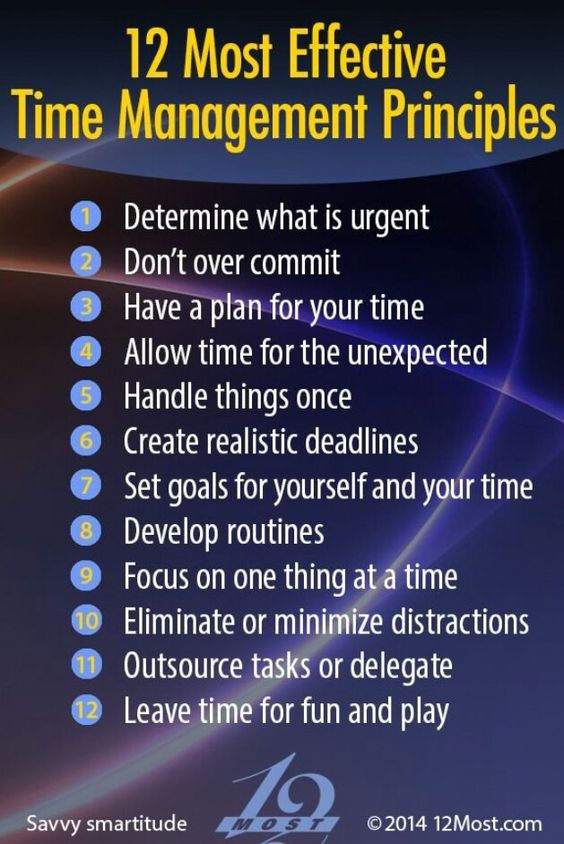
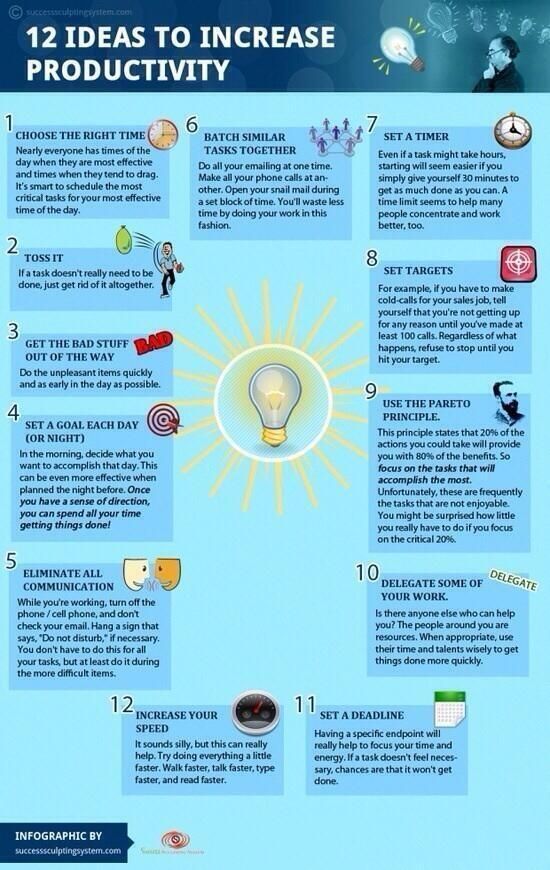
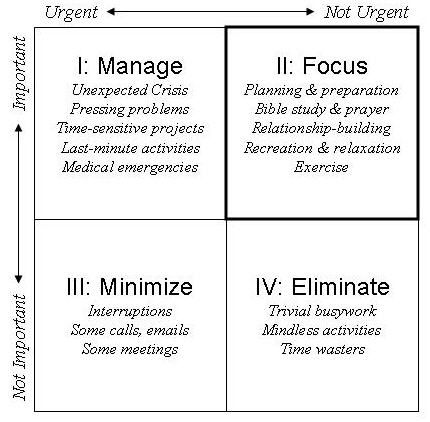
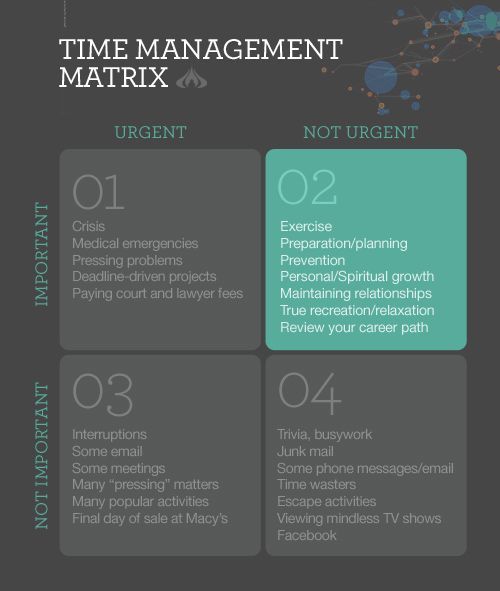
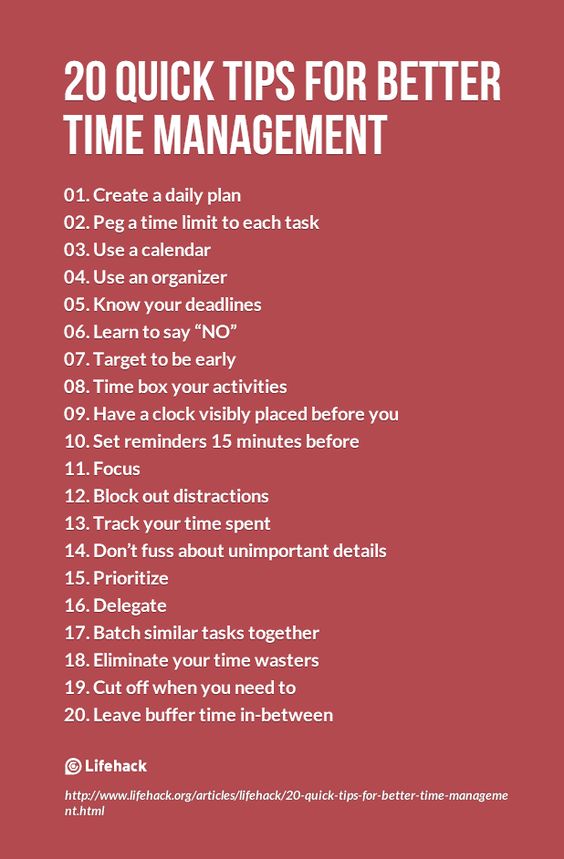
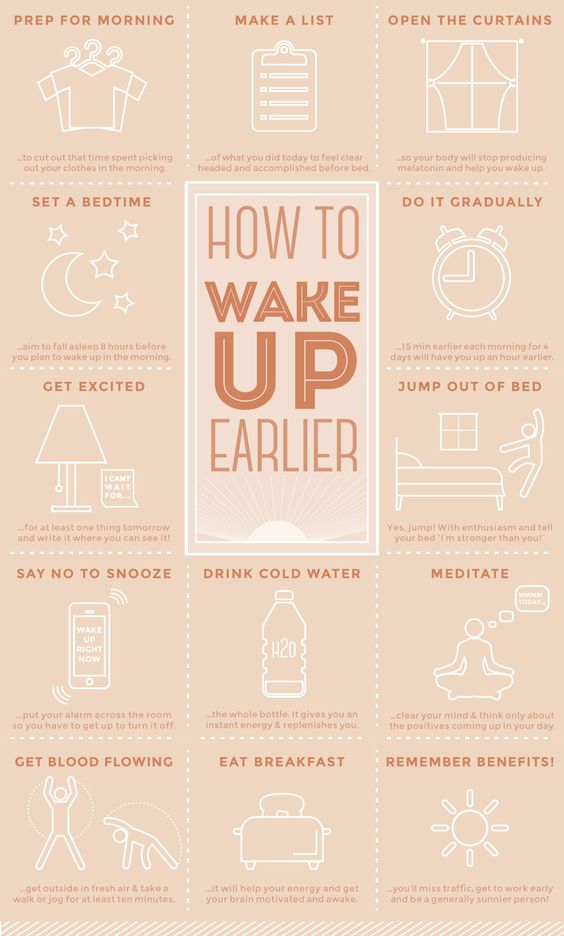

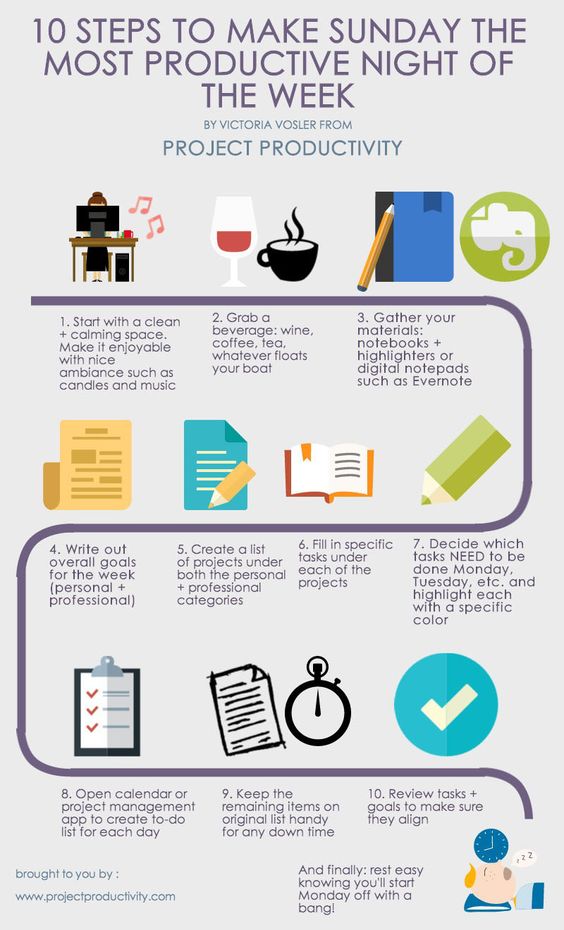
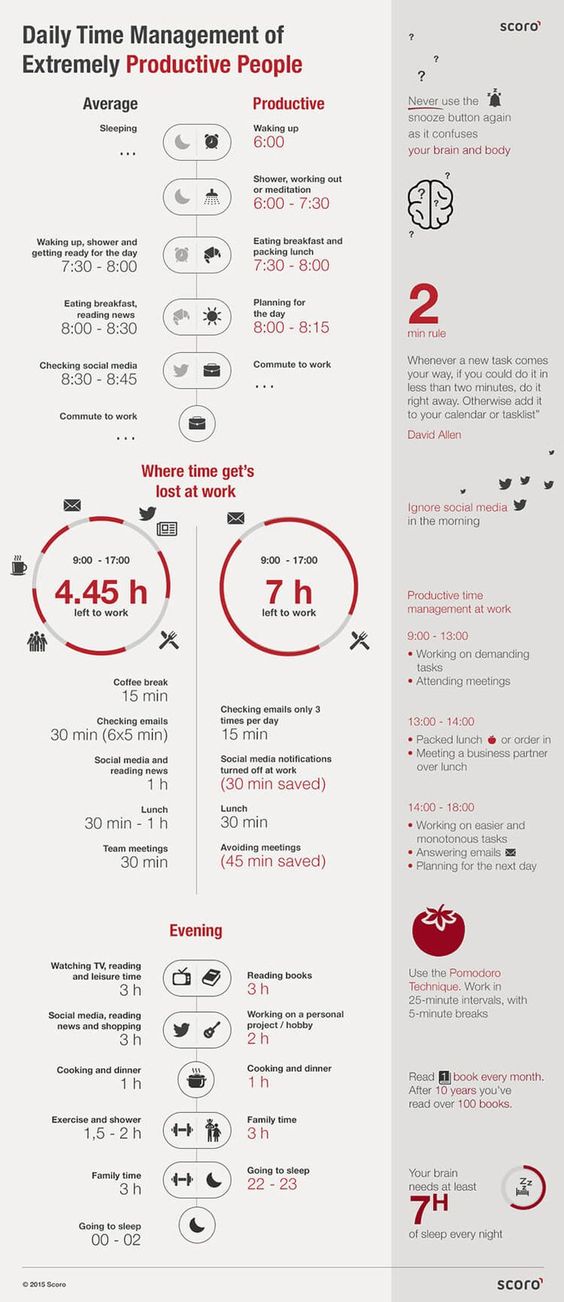
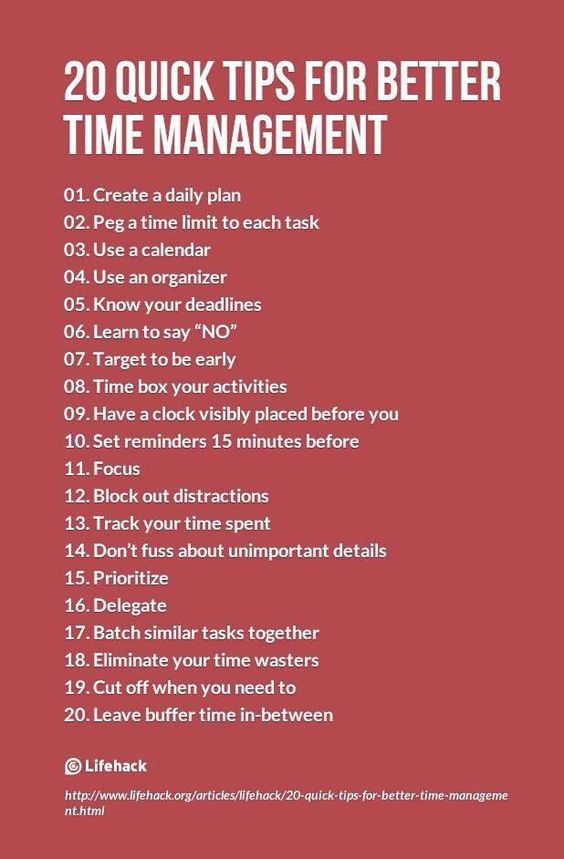

ime
Neuro-receptors – prof Tarek Assad -Full audio lectures
Full audio lectures for receptors, neuro-transmitters and mechanism of action of different psychoactive drugs
Definitions: Agonist, antagonist, partial agonist, partial antagonist
Partial Agonist
Inverse Agonist
Antagonist:
Alleusteric:
Imagine if we have baseline
Inside the Brain
Comparison Synthetic Vs Non Synthetic Cannabinoids
Prof. Dr. Tarek Assad sums up the difference between synthetic and natural cannabinoids. Aspects of comparison are regarding nature, pharmacology, morbidity …etc. The data were explained within a weekly scientific meeting in the Institute of Psychiatry, Ain Shams University, Jan 17-2017
Upgrade your concentration and focusing
The Value of Improving Your Concentration
To concentrate means having the power to focus all your attention onto one single objective. And it’s this single-minded attention that can help boost productivity and improve your ability to learn, remember and recall information far more effectively.
To concentrate means to focus on the details of what you are doing at each given moment. This is of course all about having the ability, willpower, and strength-of-mind to effectively manage unhelpful thoughts and negative emotions that can easily sidetrack you from your predetermined goal.
Concentration is therefore very much a soft skill that can help us make the most of the time we spend on specific goal-driven tasks or activities. Given this, it’s quite clear that concentration is often a key differentiating factor that separates those who succeed in one field of endeavor from those that don’t.
But what does concentration need from us? What does it take to develop our ability to concentrate for extended periods at a times?
What it Takes to Develop Your Concentration
For starters, developing concentration requires willpower. It requires strength-of-mind and the self-control needed to avoid distractions and stay on course with your task or activity.
As you work toward your desired objectives, you may experience emotional highs and lows along your journey. It is within these moments that we quickly lose our ability to concentrate and stay focused on the tasks at hand. It is therefore within these moments that people get easily sidetracked and lose their way.
Given this, it’s quite clear that in order to have the ability to concentrate over extended periods of time, we need to develop strength over our mind. More specifically, strength over our thoughts. Or in other words, mastery over the thoughts you allow yourself to dwell upon at any one time.
When things don’t go as expected, it’s easy to lose our focus and concentration. It’s within such moments that we must quieten our thought process and stay calm, composed and collected. Only in this state-of-mind are we able to bring our attention back onto what’s most important that can help us move forward toward our goals and objectives.
Concentration is however very much fueled by passion. When we passionately pursue something, we are naturally more focused and able to concentrate for longer periods at a time. The passion you have for something is kind of like a barrier between you and potential distractions. It helps you develop the laser-like focus you need to see things through till the very end.
Concentration is however not something that we suddenly miraculously acquire. It’s rather something that we need to consistently work on developing over time. In fact, it’s something that requires persistent effort, dedication, energy and practice. It’s something that you must consistently put to action in small ways throughout the day. Like a muscle, the more you use concentration, the stronger it gets over time.
How to Concentrate on an Important Task
Having the ability to concentrate on a given task is of tremendous value for helping us work more productively throughout the day. However, concentrating on a single task is never easy — especially not in this day-and-age. There are just too many distractions trying to take up our time and attention.
You can however develop your ability to concentrate on a given task if you take the time to put into practice the following six steps:
Step 1: Unclutter Your Brain
Improving concentration always begins with the uncluttering of your brain.
We come into each task with baggage in the form of emotions and thoughts from other parts of our lives. Bringing this baggage into this task will only distract you from fully absorbing yourself in the task.
With this in mind, take some time to write down some niggling thoughts, worries and problems that are on your mind. List down all the distracting things you have going on in your brain.
Once written down, just let these thoughts be. Make peace with what you have put down on paper, and decide that you will focus on these things only when you have fully completed your task and/or achieved your desired objective.
Step 2: Clarity What You Want
Concentration requires having a focus and direction for your work or study session. In other words, it requires knowing your objectives. Ask yourself:
What do I want to get done at this time?
What specifically do I want to accomplish?
How will I go about getting this task done?
Now that you understand your objective, consider for a moment the sequence of steps required to perform this task at a high level. Our brains absolutely love progression, patterns and predictability, which is why listing down this sequence of steps will help improve your concentration levels.
The moment your brain realizes that there is a method and reason to your madness, it will jump on board and help you to concentrate as you work through this task.
Step 3: Prepare Your Workspace
You should be quite focused by this stage, however your ability to concentrate is irrevocably tied to your work environment. If your environment is messy and disorganized, then sooner or later this is bound to distract you.
With this in mind, ensure that you take the time to organize your work environment. Make sure it is comfortable, clean and that all your materials are easily accessible at any time throughout your work or study session.
Now consider that to concentrate means to work both effectively and efficiently. If your work environment isn’t organized in a way that suits the task you are undertaking, then the efficiency just won’t be there. In such instances it’s just easy to lose focus and concentration when you’re struggling to find something you need to move your task forward.
Step 4: Remove all Distractions
Your level of concentration is often tied to your ability to handle distractions most effectively.
It’s probably safe to say that no matter how focused you are, you will always get sidetracked if you’re unable to manage the distractions around you.
With this in mind, identify all the things that you deem to be distractions, and remove them from your environment. Distractions could of course come in the form of people, internet, noise, and gadgets. In other words, remove your smart phone or it will distract you!
The less distractions you have to worry about, the better your ability to concentrate for extended periods at a time.
Step 5: Break Down Your Task
You previously identified the sequence of steps required to work through your task most effectively. Now it’s time to break this sequence into chunks that you will progressively work on for periods at at time.
In order to maintain high levels of concentration you must avoid falling into the pitfalls of overwhelm or frustration. The best way to avoid this trap is to break your task down into “concentration blocks”.
A concentration block is just a fancy name for working on very specific parts of your task at one time with single-minded attention. This is especially valuable for very large and difficult tasks. These tasks can quickly become overwhelming if you try to tackle them all at once. Instead focus on segmenting the task into related parts that you can work on one at a time. These are of course your concentration blocks that will help keep you focused for longer.
Step 6: Assign Time Limits and Deadlines
The final step to improving your concentration while working on a task is to set time limits and deadlines.
A time limit is a set time you allocate for working on a specific task throughout a single day. A deadline is a date you set for the completion of that task.
Setting time limits and deadlines is valuable for improving concentration because it brings a sense of urgency into your work. With urgency your brain is motivated to stay focused and therefore has the ability to concentrate for longer periods at a time.
The best way to set time limits is to simply use a timer. For instance, commit yourself to work for 30 minutes non-stop. Then outline what you will attempt to get done over that period of time. When you’re ready, start the timer and get to work. By focusing all your energies on hitting your set targets, you will find that your concentration levels dramatically improve.
How to Develop Your Concentration Muscle
We’ve already established that developing concentration takes work. But what kind of work does it actually take? In other words, how do we consistently work on developing our concentration muscle so that it strengthens over time?
Here within this section let’s explore how to channel your energies to help you focus on what you are doing and subsequently develop your ability to concentrate for longer periods at a time. Then within the last section we will look at concentration exercises you can practice daily.
Work with Purpose
Many people struggle to concentrate because what they are doing simply has very little value or meaning. In other words, they have no compelling reason driving them forward to work on their chosen task or activity. And without these reasons there is little motivation. And of course without motivation it’s difficult to concentrate as your brain constantly searches for other avenues of entertainment.
With this in mind, it’s important that you always find a compelling reason or purpose that drives you forward through each task and activity. One of the best ways to do this is to convince yourself that what you’re doing is relevant to your life, goals and circumstances. But in the off-chance that it’s not relevant, then you must take the time to make it so.
Purpose is therefore fueled by relevancy and reason. The task must be relevant to your life and you need to have a reason for accomplishing it. Only in this way will you put yourself into the right frame-of-mind that will fuel your concentration.
Given this, ask yourself the following questions for each task you undertake:
How is what I’m doing relevant to my goal?
Why is it important to accomplish this task?
What is my purpose and reason for doing this?
Stay Focused on the Present Moment
To concentrate means to stay present in the moment. This is of course all about being mindful of what you are doing and about fully absorbing yourself in the task or activity you’re undertaking. This is however easier said than done.
It’s difficult to stay mindful and focused on the present moment when we have a plethora of distractions to deal with. Many of those distractions come in the form of either auditory or visual stimuli.
With visual stimuli, you simply need to remove yourself from anything that could disrupt your concentration. Either remove yourself from that environment, or figure out how to remove the visual distractions from sight.
With auditory stimuli — that typically includes background noise — it’s not always easy to remove ourselves from these types of distractions. In such instances, you don’t necessarily need to remove yourself. You can instead put headphones on and play soothing music or white noise in the background. Alternatively, you can wear earplugs to dull the noisy distractions.
The less you need to worry about external distractions, the far easier it will be to stay focused on the present moment and concentrate on the task at hand.
Adopt a Beginner’s Mindset
When we are beginners undertaking a task or activity for the very first time, we are naturally very focused on all the details and on every step of the process we are working through. Within that moment we are fully absorbed in everything we are doing, and this naturally helps strengthen our concentration muscle.
In time, when we become more familiar with a task or activity, we know what’s coming next, and as a result it’s easy to get sidetracked and distracted while working through our chosen task. And this is of course when our concentration levels plummet and we end up making silly errors and mistakes.
In order to avoid this scenario and to keep your concentration levels high, pretend as though you’re working through the task for the very first time.
Recall, how you approached this task the very first time. What kind of questions did you ask yourself? How much focus and energy did you apply to the task? What sequence of steps did you undertake? Now consider how you could improve your effectiveness and efficiency working through the task today. What could you do differently? How could you potentially challenge yourself in new ways?
Whenever you take the time to change up your approach and challenge yourself in a new way, that is when you automatically become more interested and engaged in what you are doing. This is the beginner’s mindset. And with the beginner’s mindset you naturally enhance your levels of concentration.
Avoid Multi-Tasking
Multi-tasking was once a huge craze. Everyone was bragging about how multi-tasking can help to double our productivity levels. All we needed to do was figure out how to work on more than one task simultaneously and we could subsequently accelerate our results. All this of course sounds wonderful on the surface, right? But does multi-tasking actually work?
Our brain is actually hard-wired to focus on one thing at a time. Yes, you can certainly work on two things at a time, but that doesn’t mean that your brain is focusing on those two things at one time.Your brain simply jumps from focusing on one task and then onto the next task. It’s never fully focusing on both at the same time.
In order to build your concentration muscle, you need to stay focused on one activity at a time. Jumping back and forth between activities leads to inefficiency and error. Your brain can get easily distracted in between those jumps. You’re better off staying focused on one task until it’s done, and then working through the other task afterward. This way your brain will settle into a pattern and rhythm that can help you to work through each task far more quickly and efficiently.
Proactively Fight Boredom
One of the greatest concentration potholes comes in the form of boredom. When we are bored, it’s almost impossible to concentrate on what we are doing.
When your brain isn’t interested in the task at hand it desperately tries to escape its prison sentence by distracting you in any-which-way you could imagine.
The key to avoiding boredom is to make your task fun, engrossing, exciting and challenging. Either turn what you are doing into a game, or challenge yourself to undertake this task in a new way that gets your brain interested and engaged in what you are doing. This is one of the best ways to strengthen your concentration muscle.
Monitor Your Progress
One of the keys to strengthening your concentration muscle is to actively monitor your progress as you work on a task. This of course means understanding your objectives, and then taking gradual steps to reach certain targets that move you closer to the attainment of your goals.
Of course spending too much time monitoring progress can in itself become a distraction and hurt our ability to concentrate on a given task. However, progressive monitoring at set intervals can actually help you to make the necessary adjustments to your workflow — thereby improving your output on any given task.
Here are some quick questions that can help you to monitor your progress and concentration levels as you work through a task or activity. Ask yourself these questions at set intervals to help you monitor how the task is going.
What have I been working towards?
What is my goal? Am I on track?
What progress have I made toward that goal?
What adjustments might be necessary moving forward?
What have my concentration levels been like over this time?
How could I do better and improve my ability to concentrate on this task moving forward?
Take Care of Your Body
You can of course flex your concentration muscle in various ways throughout the day, however it will all be to no avail if you don’t take care of your body.
The body and brain are intrinsically connected. When your body feels good, is healthy and energized, your brain is in a better state-of-mind and can therefore concentrate for longer periods at a time.
With this in mind, be sure to get enough sleep, drink water at regular intervals, get enough fresh air to oxygenate your brain, and exercise for short bursts throughout your day. In addition to this, don’t eat heavy meals before undertaking a difficult task as this can significantly interfere with your concentration levels.
When your body is digesting food, it draws blood from other areas of the body (including the brain) in order to assist with the digestion process. This often leads to a sluggish feeling where we just struggle to concentrate and stay focused for extended periods at a time. It’s only when the food has been adequately digested do we regain that energy once again.
How to Exercise Your Concentration Muscle
Here within this final section let’s discuss how to exercise your concentration muscle. These are essentially small things you can do throughout your day that will progressively strengthen your ability to concentrate for longer periods at a time.
Working through some of these exercises will of course take practice. But with practice you will improve and this will allow you to stay focused for longer while working through critical tasks and activities
Practice Purposeful Conscious Awareness
Purposeful conscious awareness is all about staying present within the moment for extended periods at at time. It’s essentially a fancy name for practicing mindfulness.
In order to practice purposeful conscious awareness you must tune-in to what you are doing right now at this very moment, and ask yourself the following set of questions:
What am I doing right now?
Why am I doing this right now?
What am I feeling right now?
Why am I feeling these things?
Is it helpful to feel this way about this? Why? Why not?
These questions will help you to focus-in and concentrate on your behavior and actions in the present moment.
Most people typically would never do this. However, it can be quite a valuable process as it allows us to consciously identify what we’re doing, assess how it’s working, and specify how we feel about our circumstances.
Undertaking this process several times per day, can help you to build your concentration muscle. It helps because it forces you to tune into the present moment, when typically we would normally get lost in our own thoughts and unfulfilled desires.
Practice Being Attentive to Your Surroundings
Another great way to practice developing your concentration muscle, is to tune into your surroundings. In other words, tune into what’s going on around you using all your senses, and then just stay focused in the moment.
What this essentially means is to become a witness of your surroundings. For instance, close your eyes and listen to the sounds of the environment, to people’s speech, or to the music playing around you. But don’t just listen, also try to understand what’s happening and tune into the dynamics between various elements and how they interact with one another.
Here are some questions you can potentially ask yourself that will help you to attend to your surroundings:
What do I sense within my surrounding environment?
What exactly is going on around me? Why?
What’s important about all this?
What do the words of this song mean?
What instruments are playing in this musical piece?
What are these people saying?
What are their motives for saying these things?
Practice Observing Fine Details
Typically we go about our day lost in our own heads. We see what’s happening around us, but don’t truly take the time to observe the finer details.
One of the best ways to improve your levels of concentration is to practice observing the details of your surroundings. For instance, while commuting or walking, stay present in the moment and just observe what’s happening within your present environment. See the details, identify objects, and explore patterns. Really take the time to concentrate and try to see things in a new way like never before. In fact, identify things you’ve never observed before and concentrate all your energy on trying to understand why things are the way they are and not any different.
Practice Focused Meditation
Practicing focused meditation is another fantastic method for developing your concentration muscle.
Begin by sitting in a quiet place with no external distractions. Take a moment to settle your mind and clear your thoughts. Nothing else should matter but this very moment.
Now focus your eyes on a single external object within your present environment. A clock face or a candle flame often work well. Just focus on this object with all your mental energy for as long as possible without allowing your mind to drift. However, be sure to relax. Don’t strain. Just settle in the moment and allow yourself to become one with the object you are observing.
The more often you practice focused meditation, the easier it will be to concentrate for extended periods at a time on the tasks and activities you are working on.
Practice Recollecting Fine Details
One of the more effective ways to improve your ability to concentrate can be done anywhere and at anytime.
Simply take a moment to close your eyes and recall what you did last week, last year, this morning, or at another time in as much detail as possible. Think about what happened, where it happened, for how long, what the weather was like, who was there with you, etc. The more details you can bring to mind, the higher level of concentration will be required.
Alternatively, flip through a magazine. Observe several photos, and then close your eyes and recall all the fine details from memory.
These simple concentration exercises will help you to become more mindful of your surroundings as you go about your day.
citation:






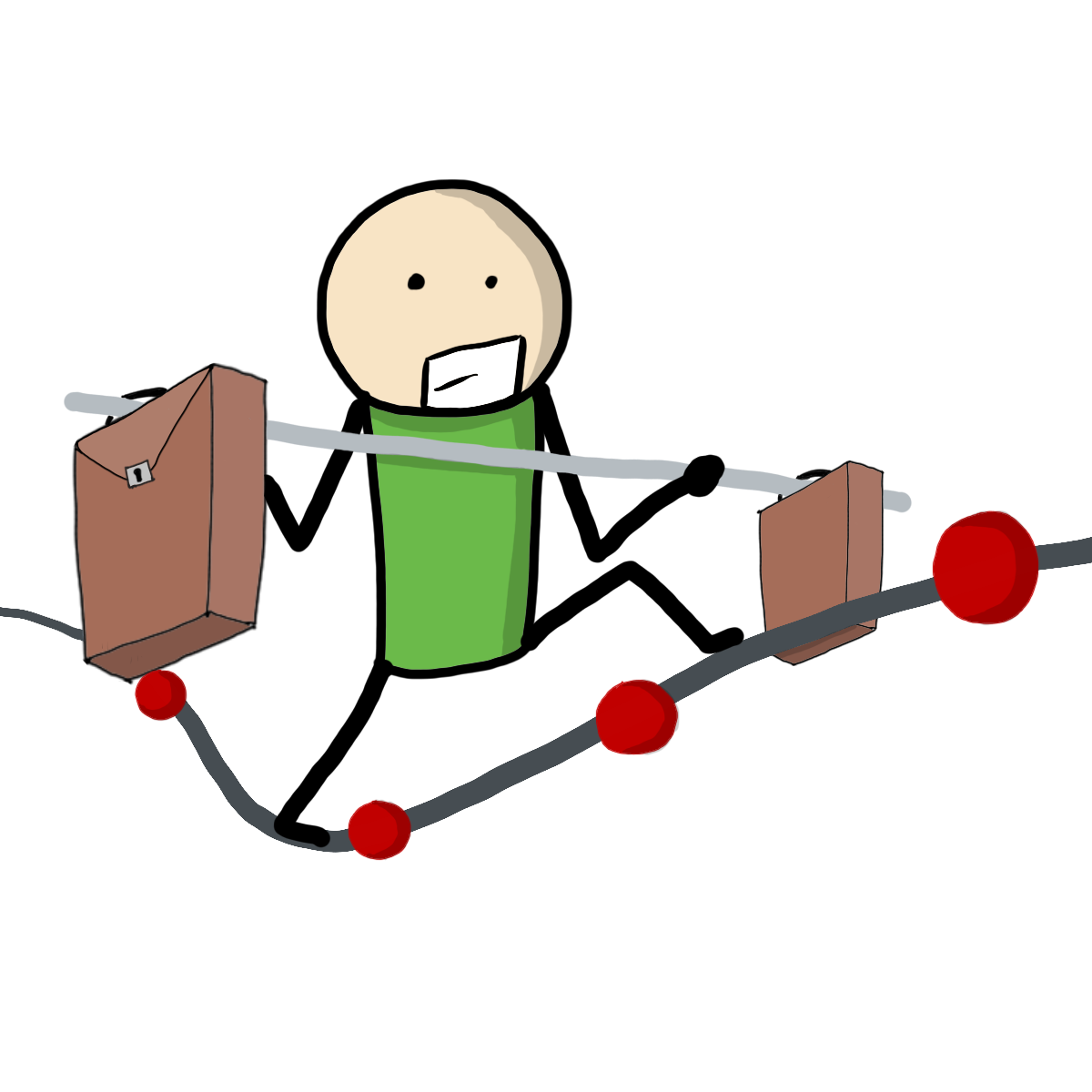




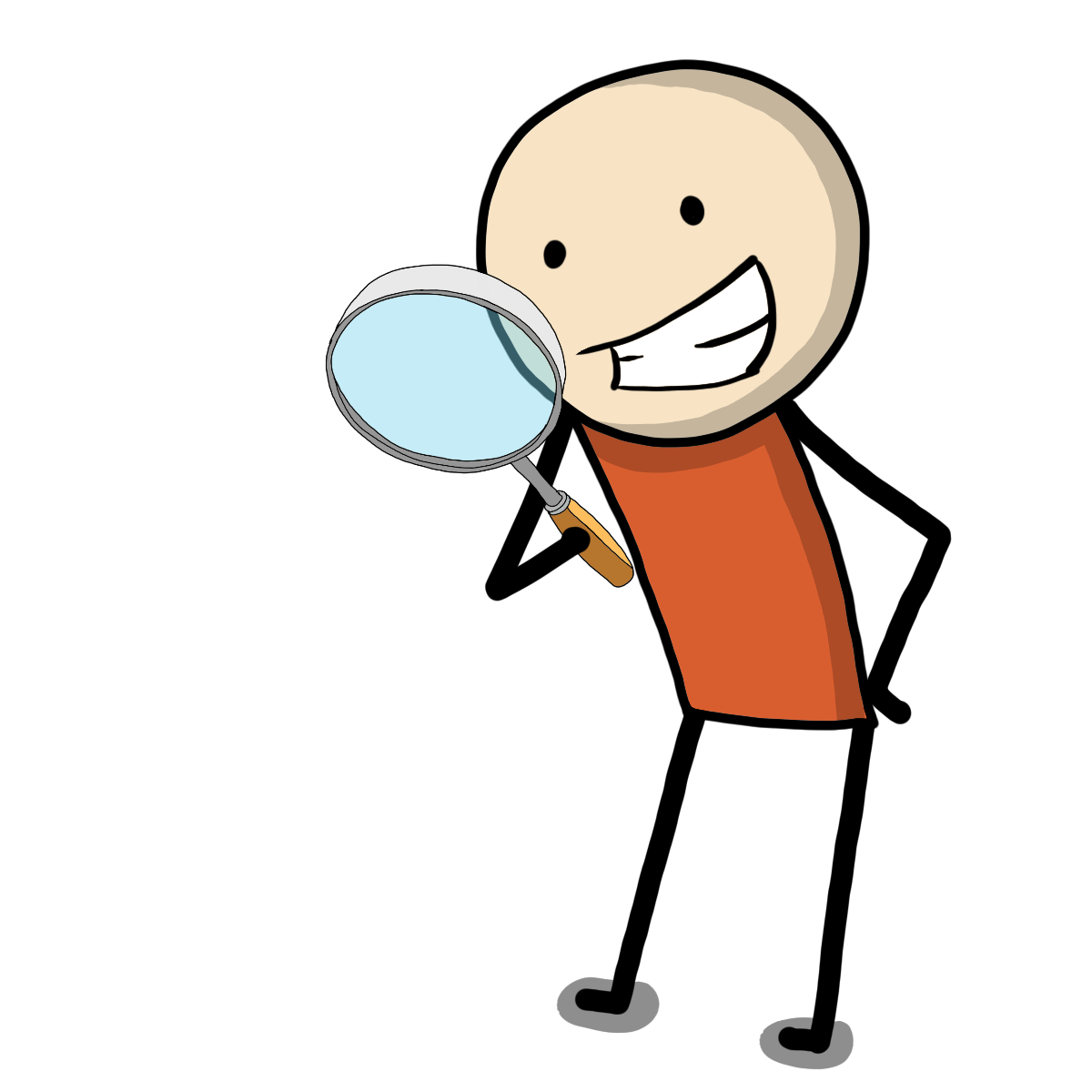


/about/71927508-56a793a33df78cf772974d01.jpg)
/about/denial-56a7920c3df78cf772973a1b.jpg)





